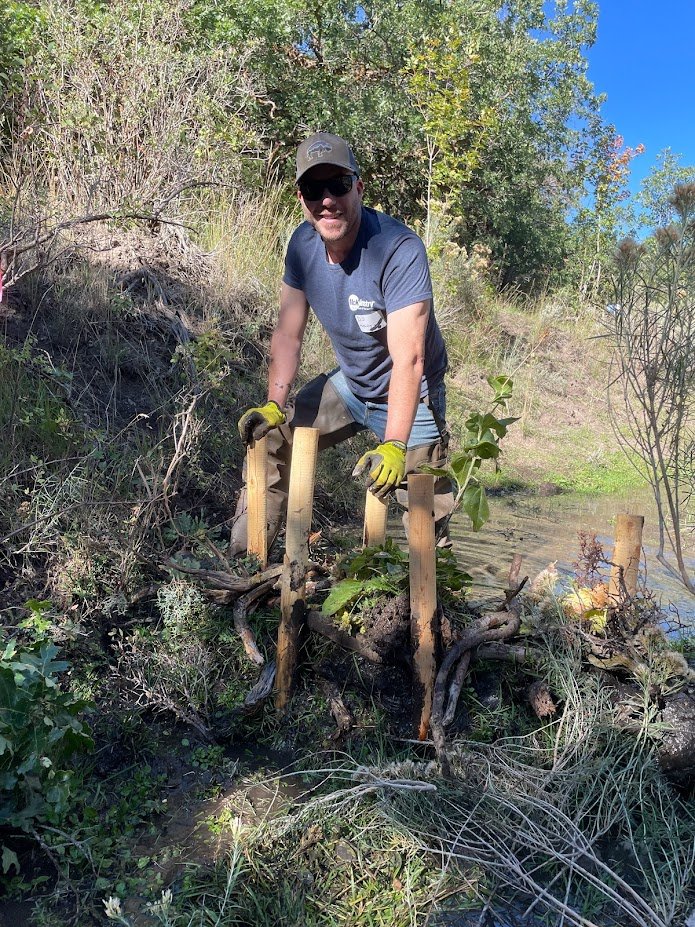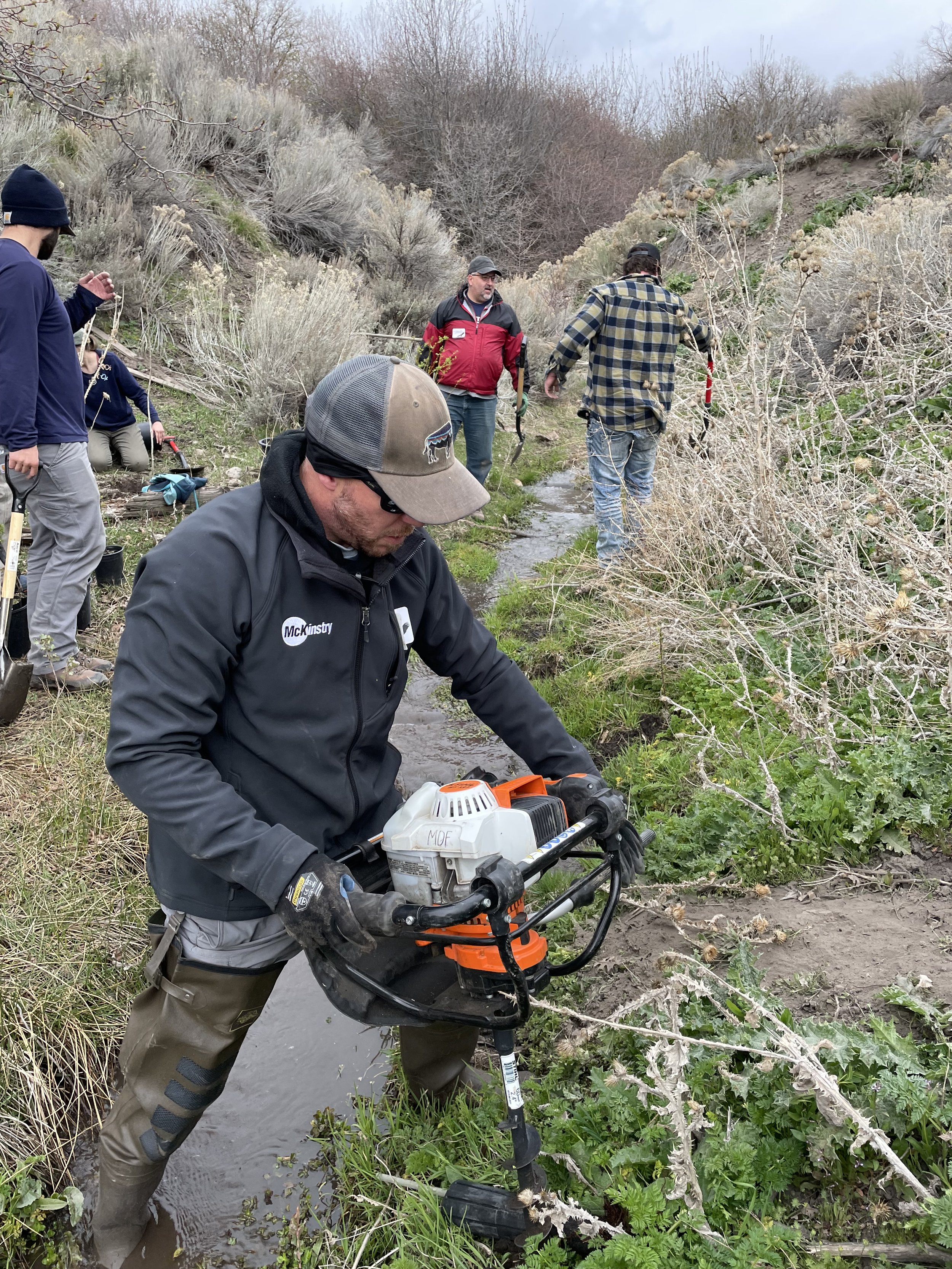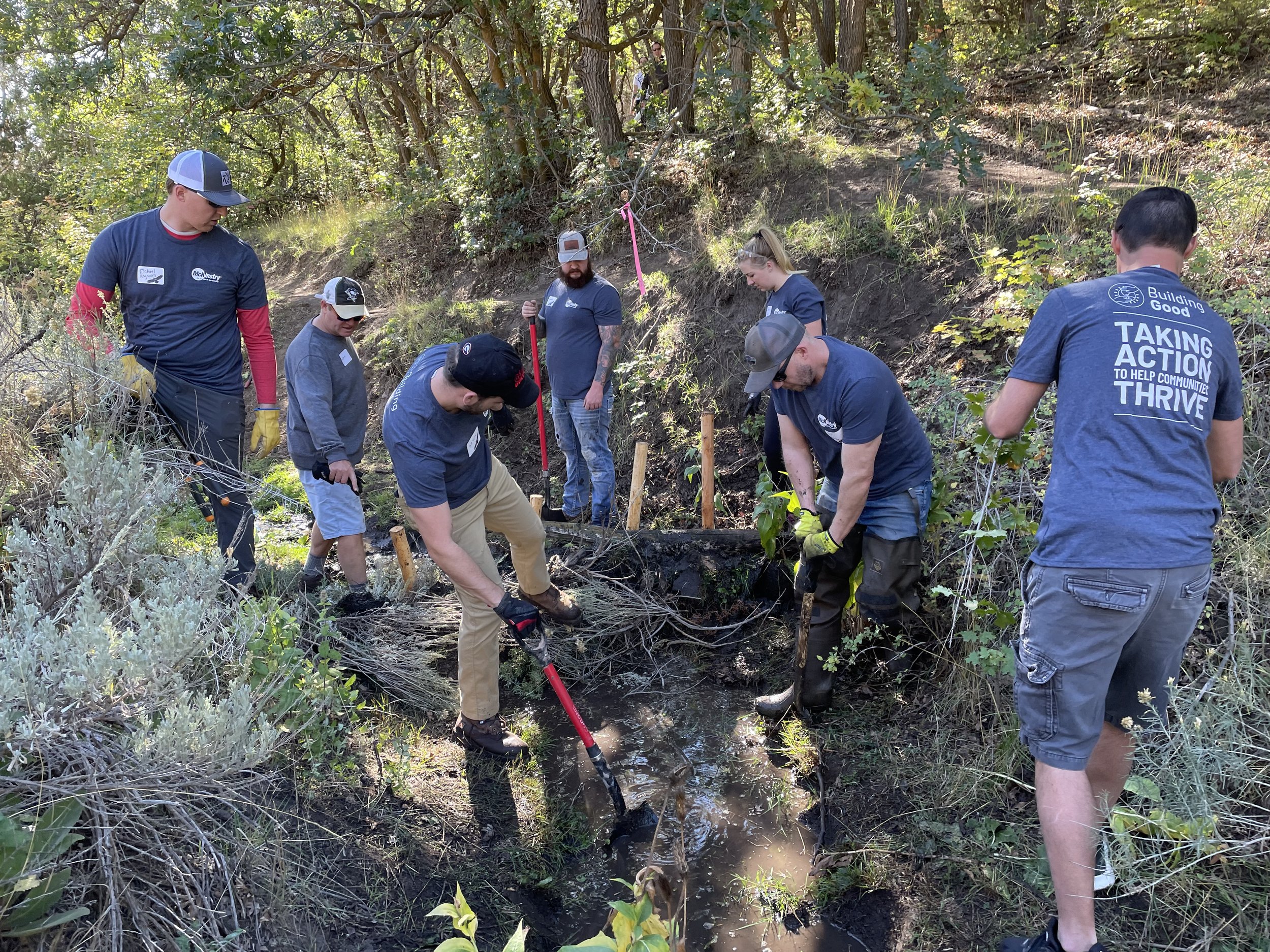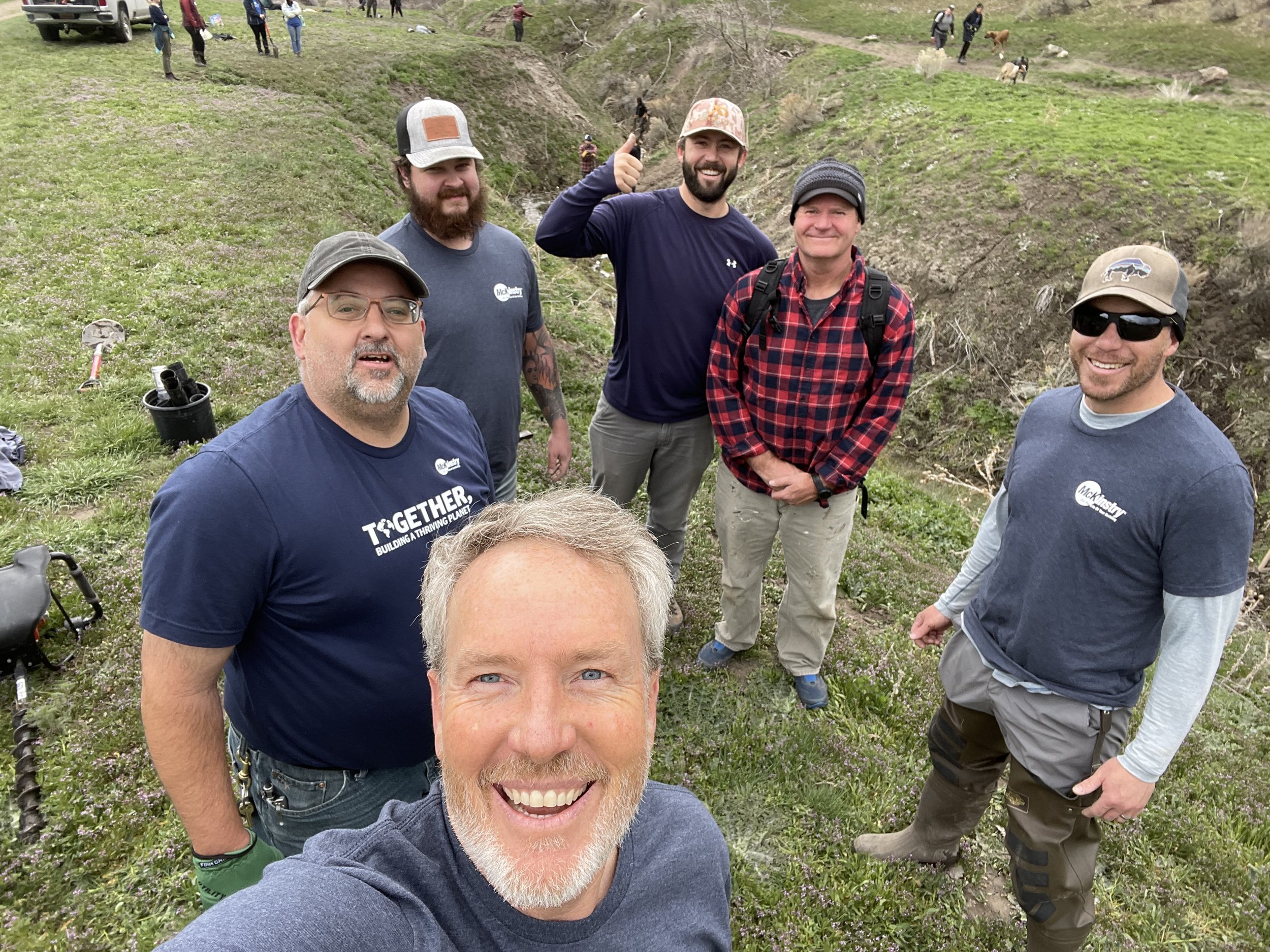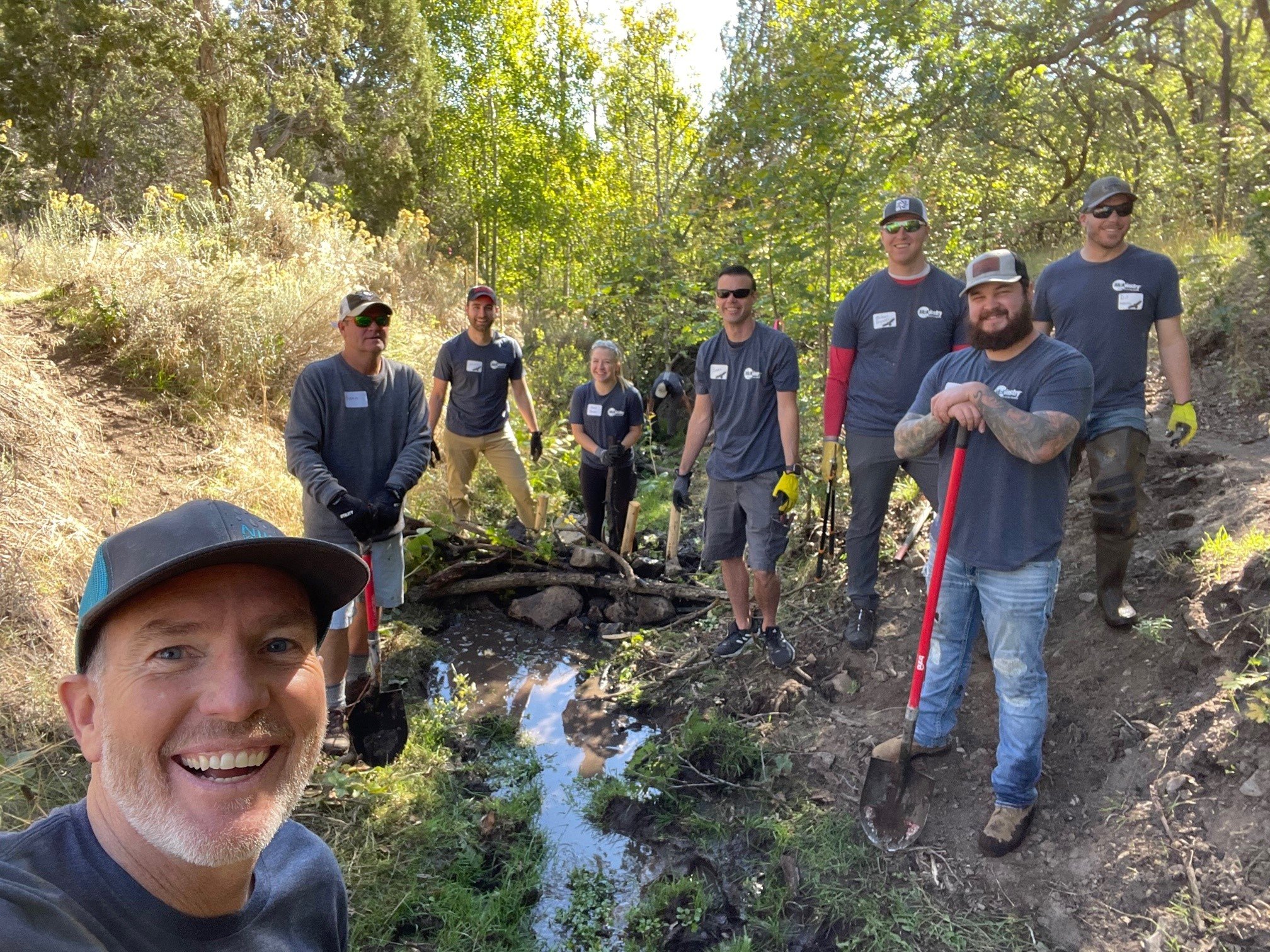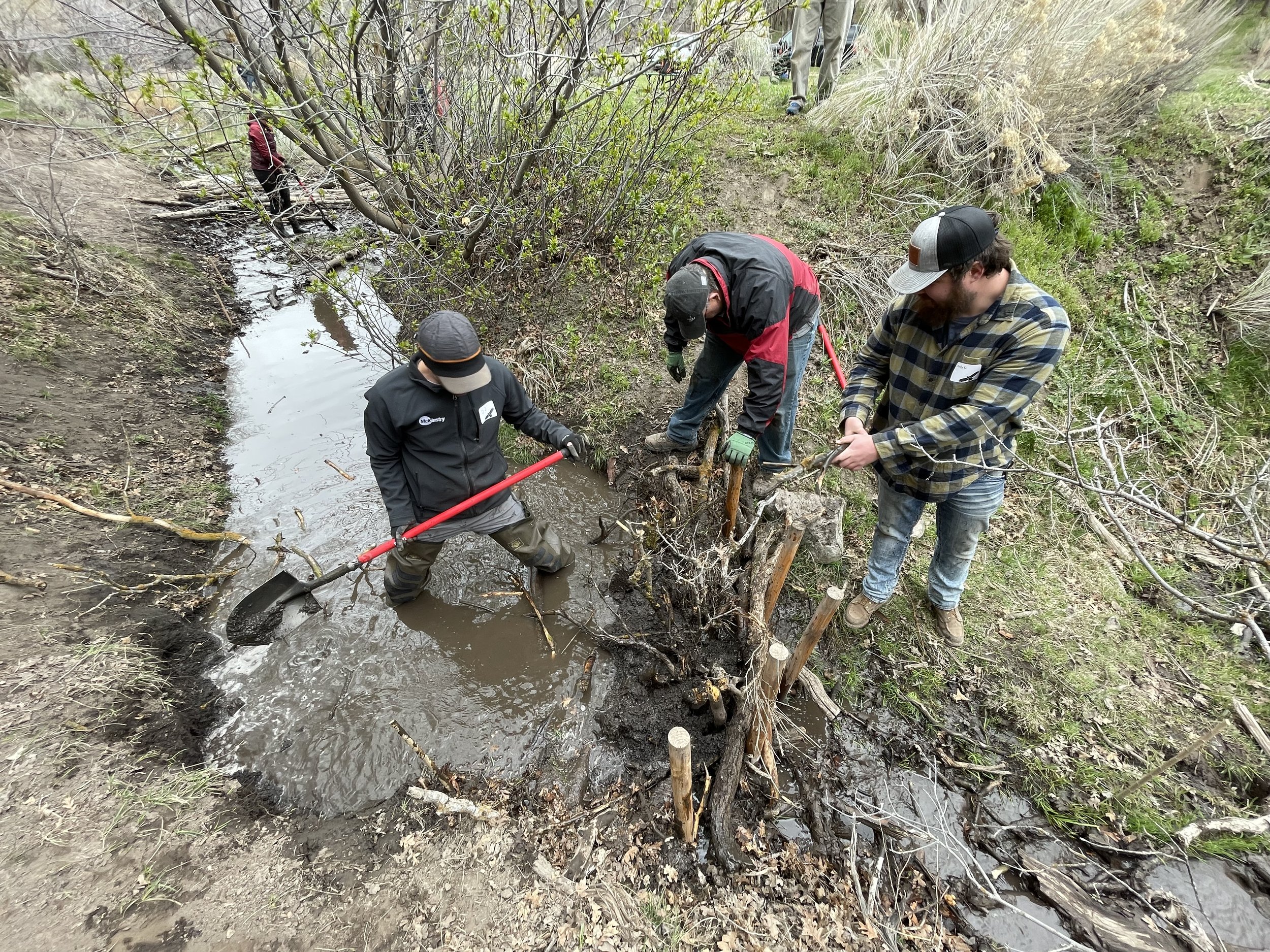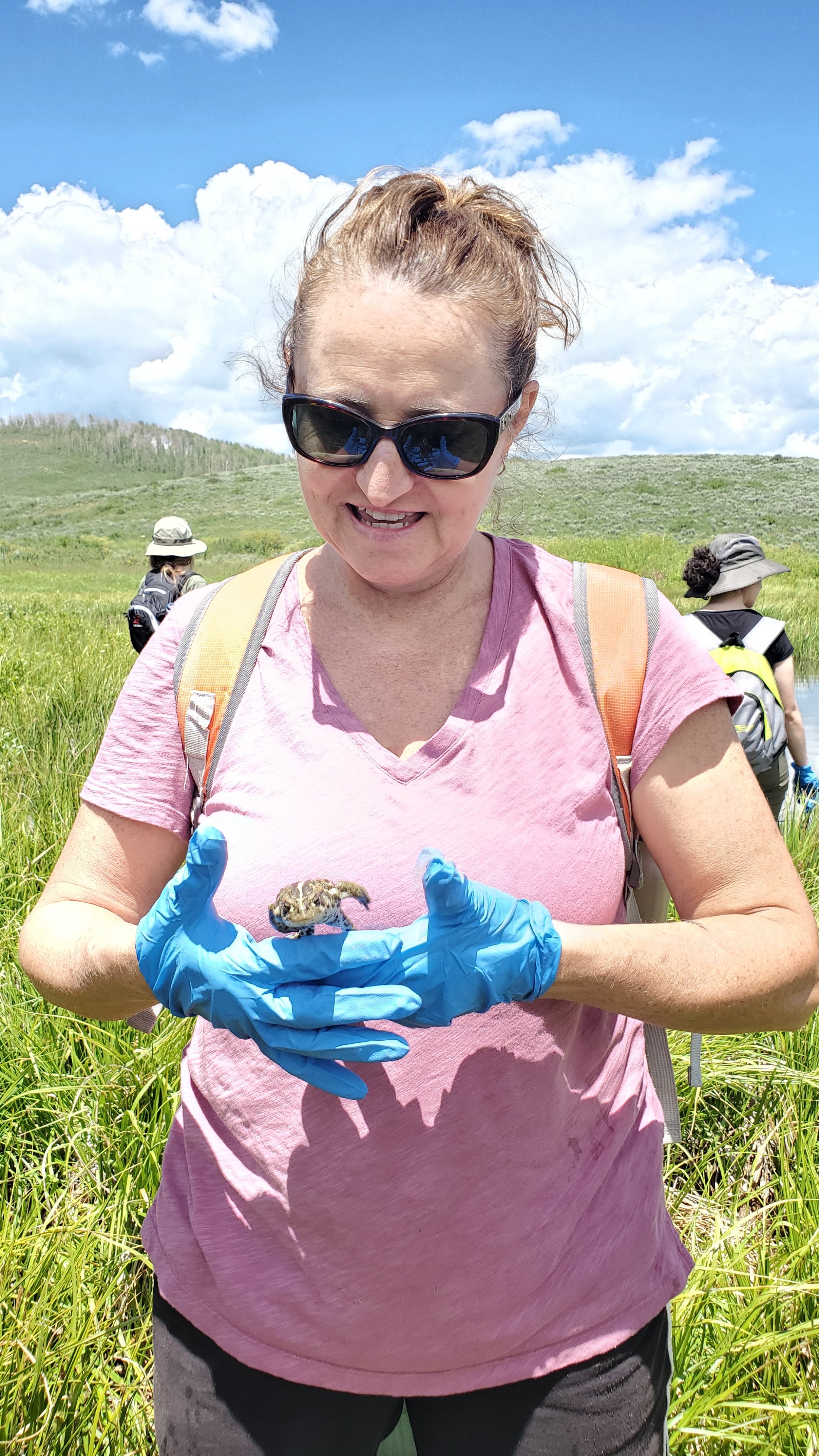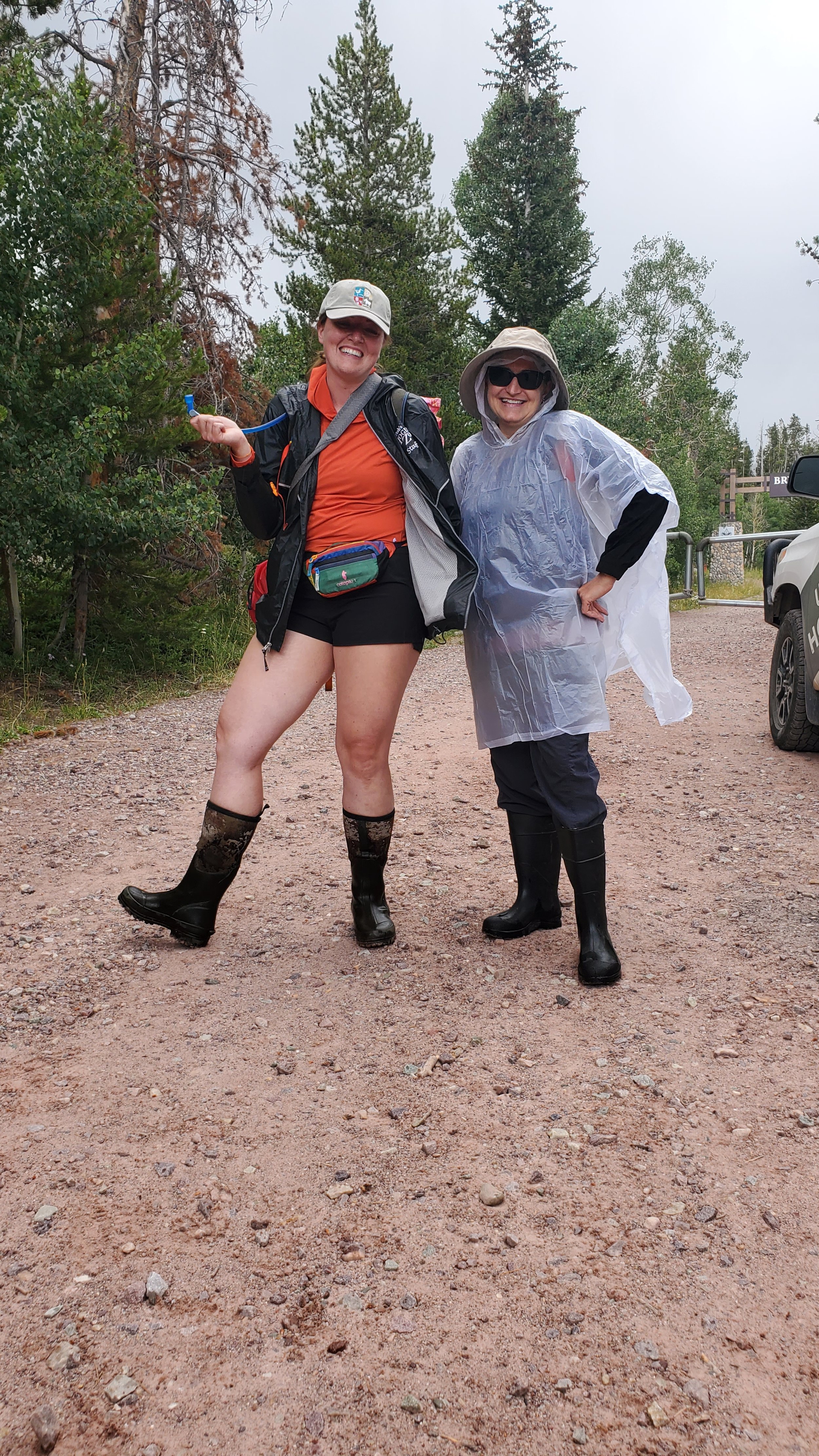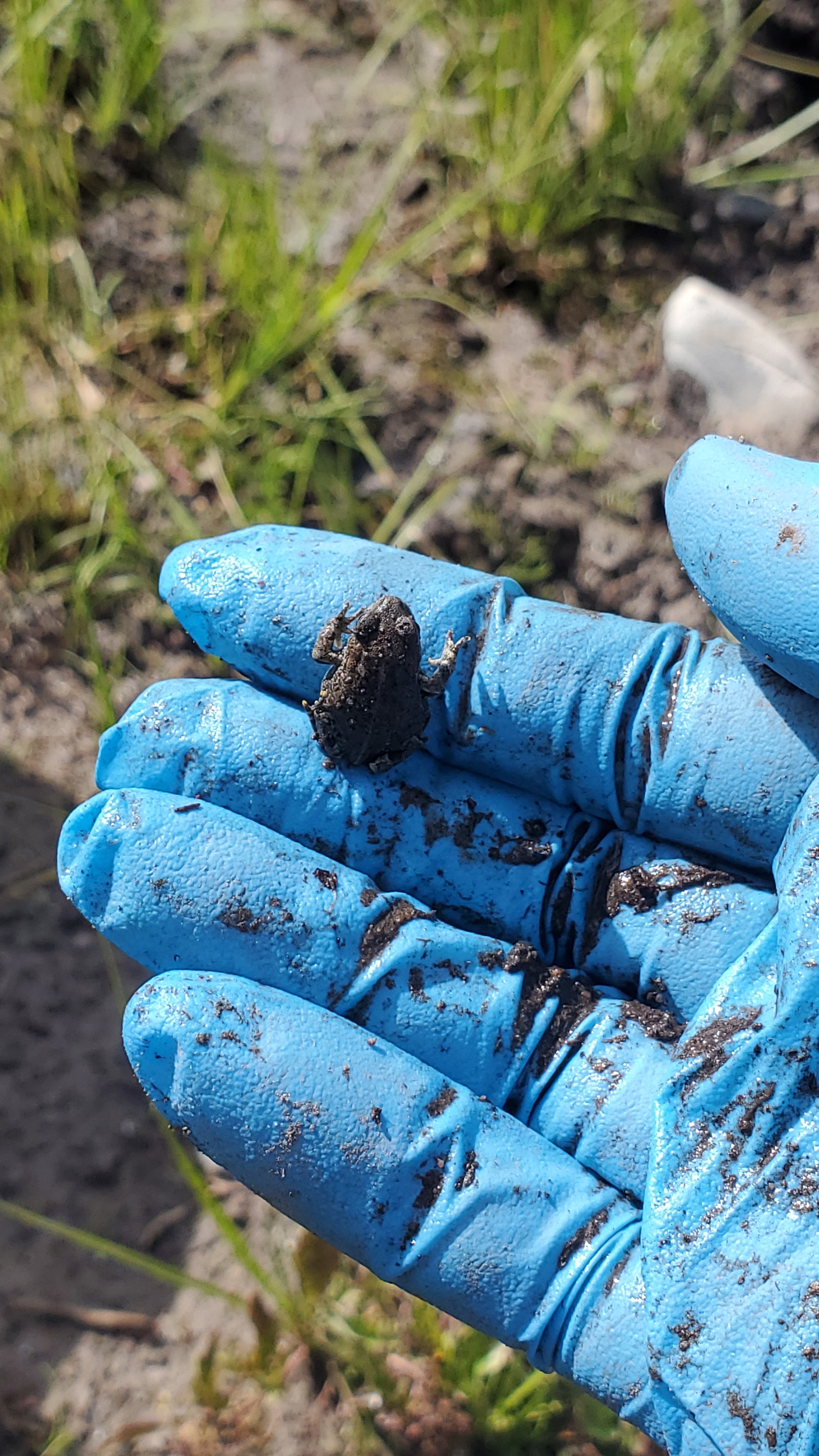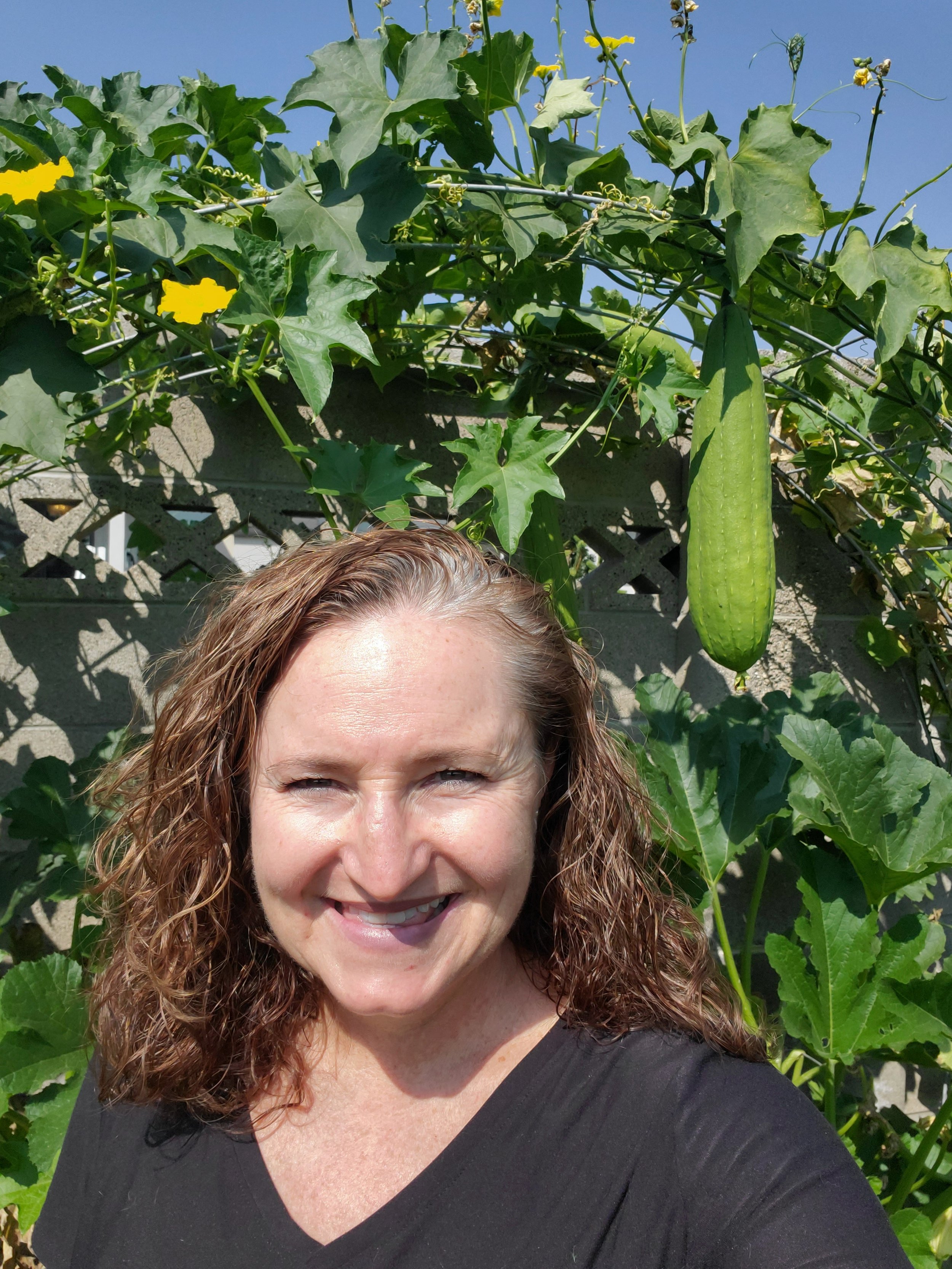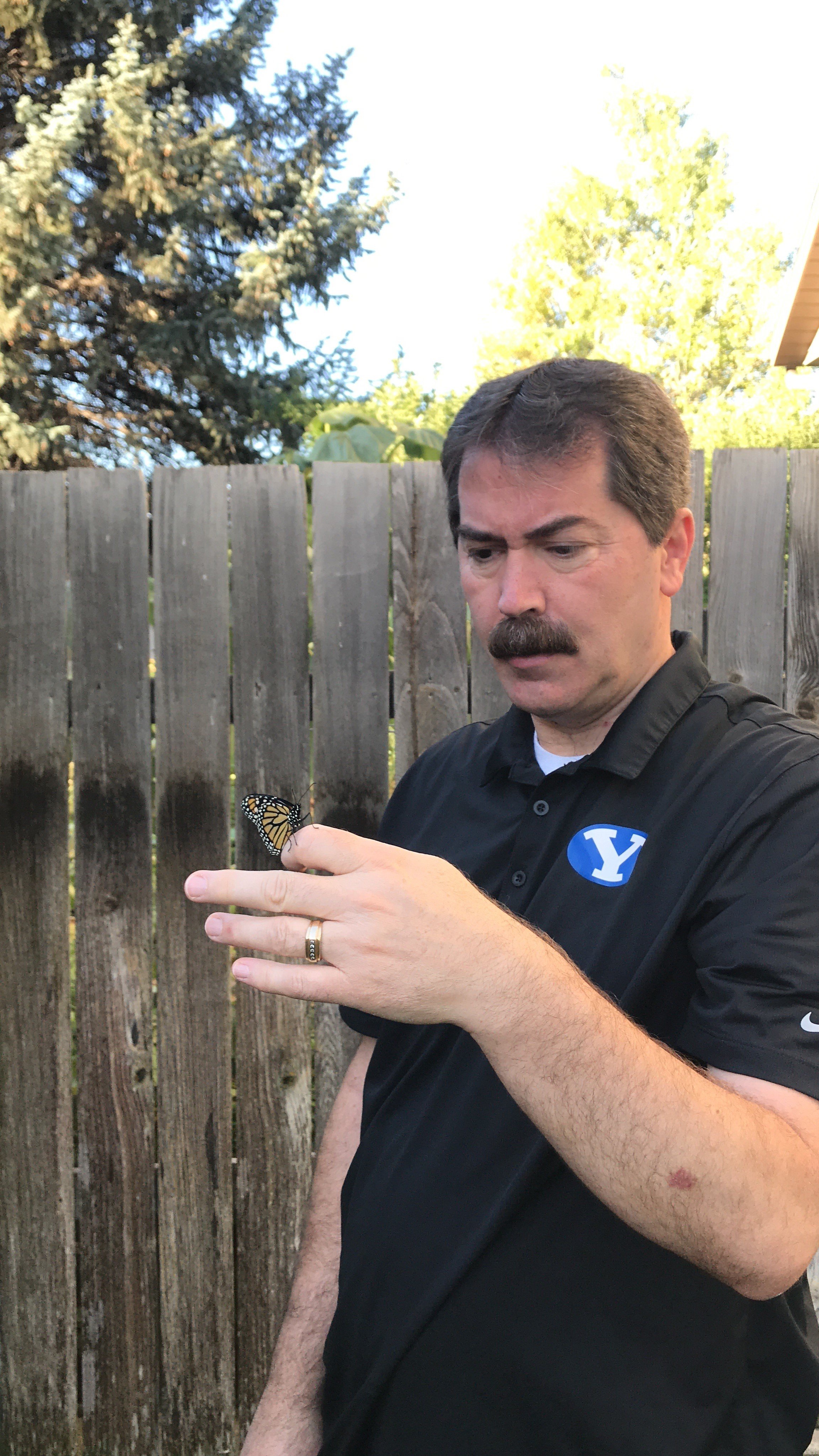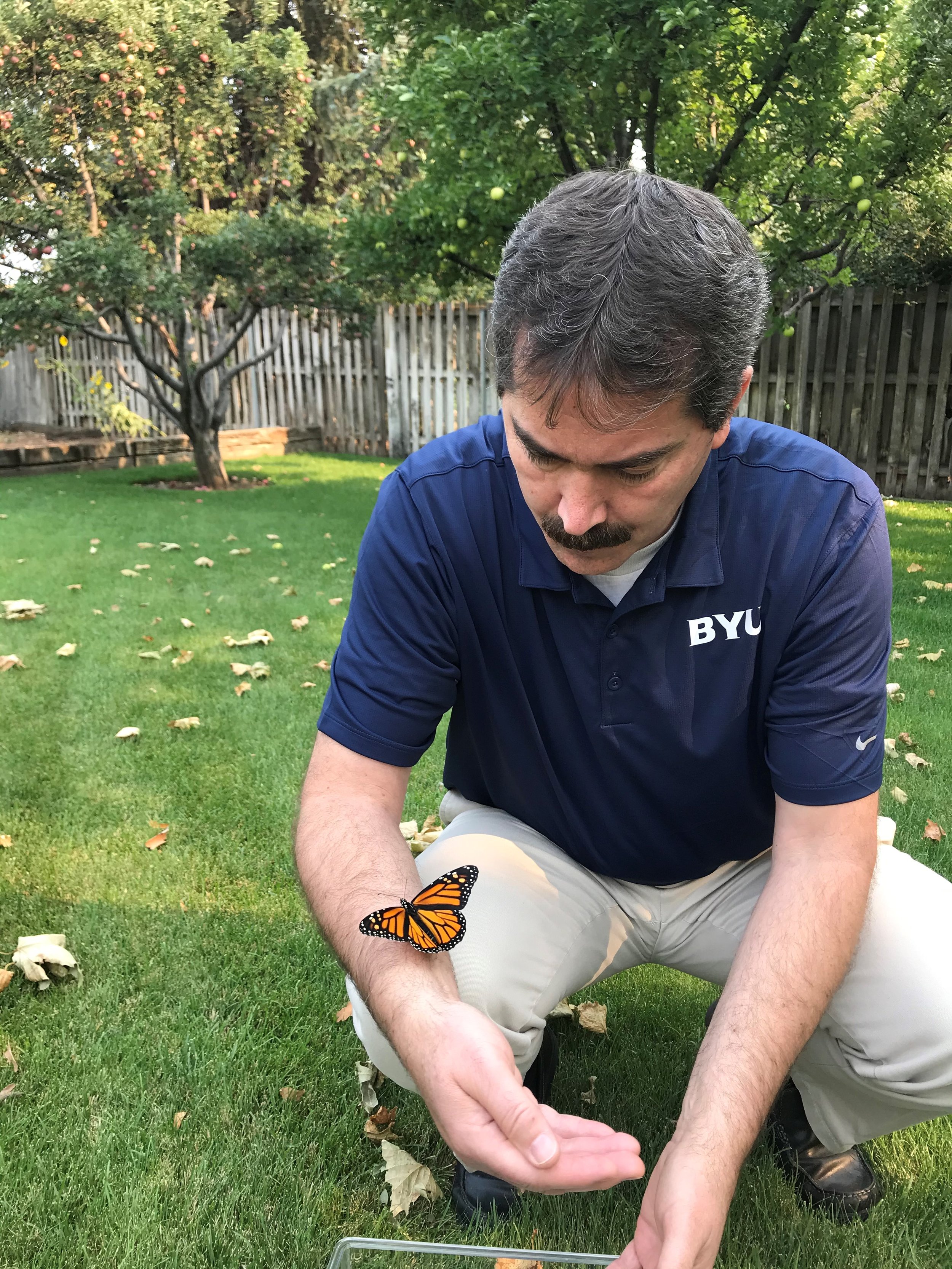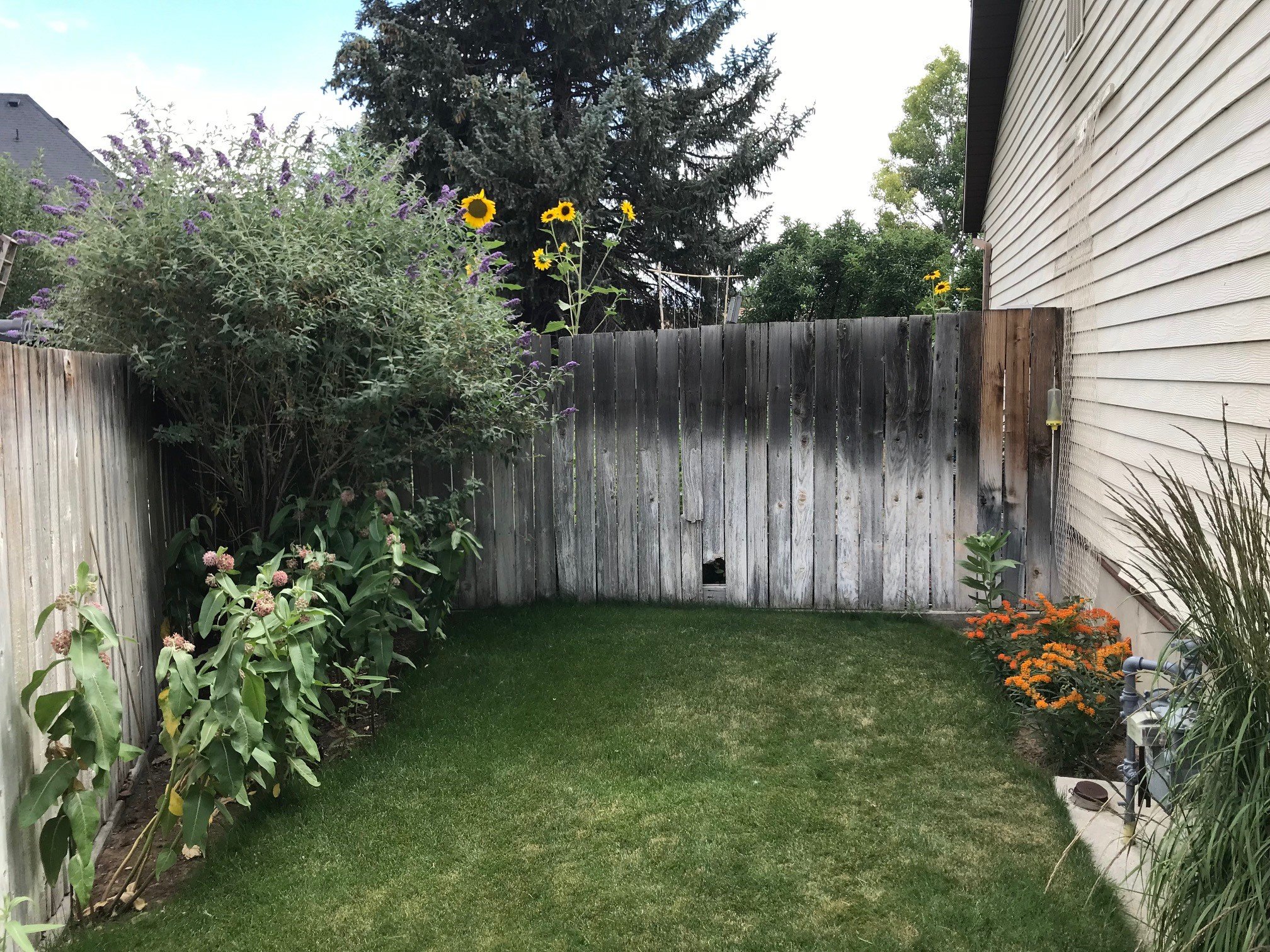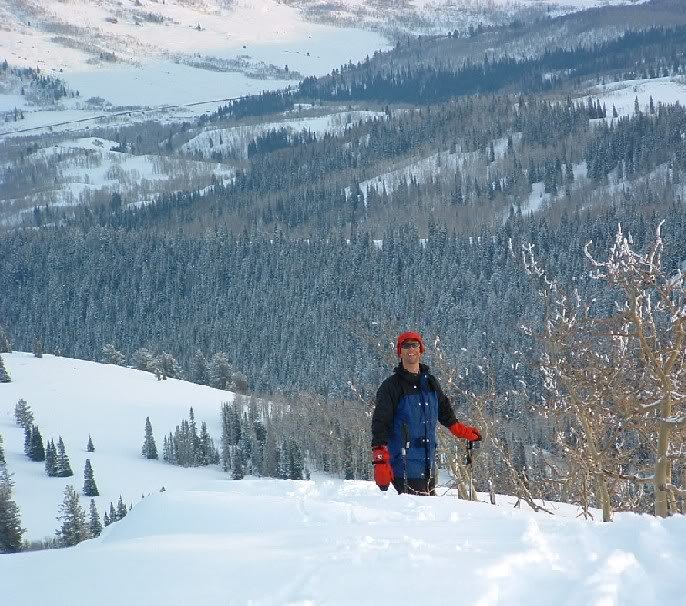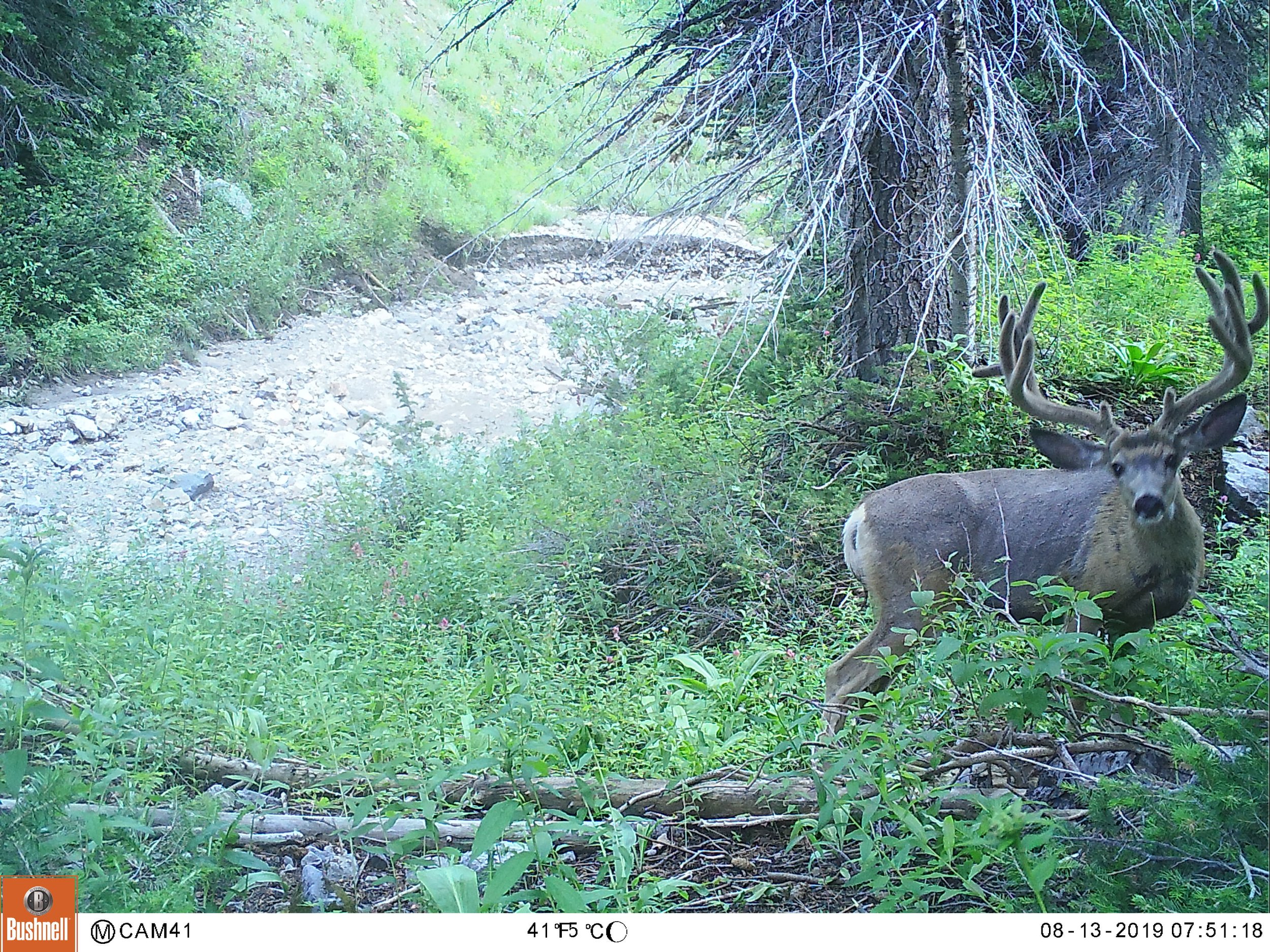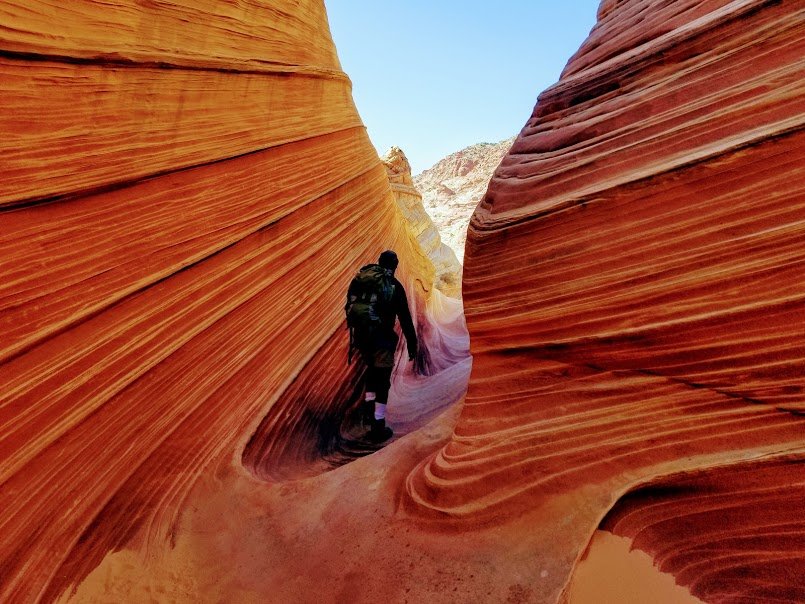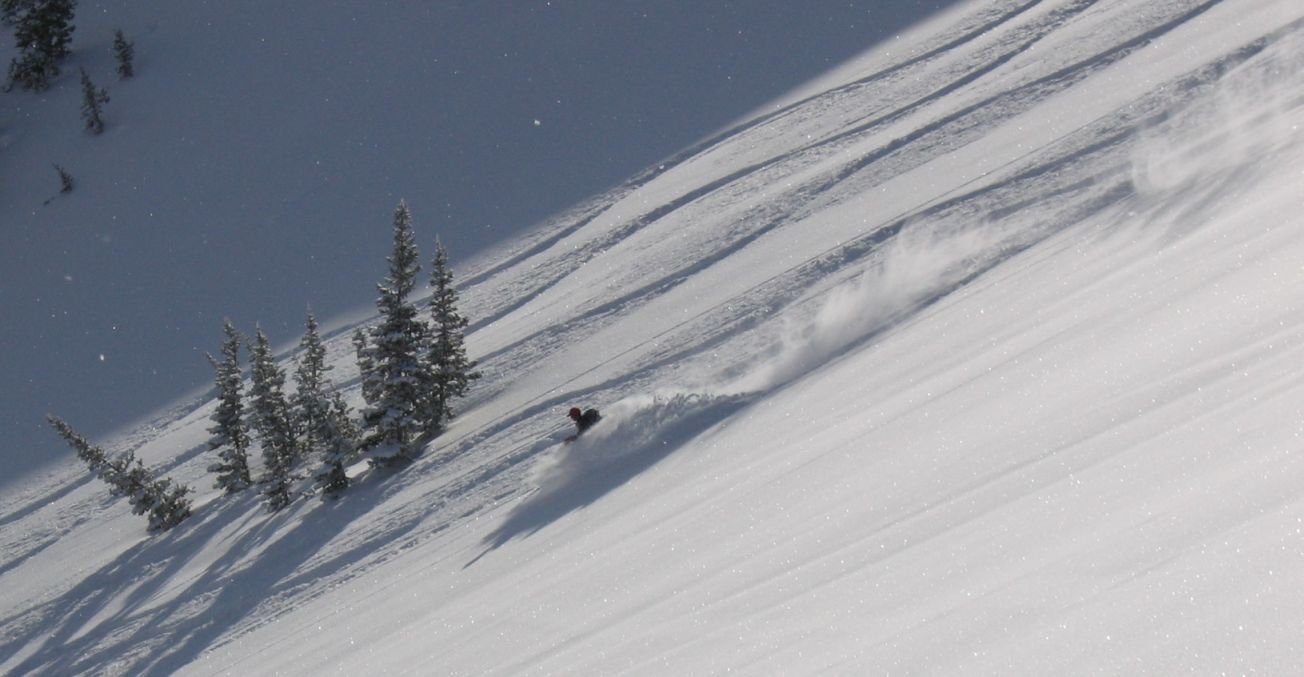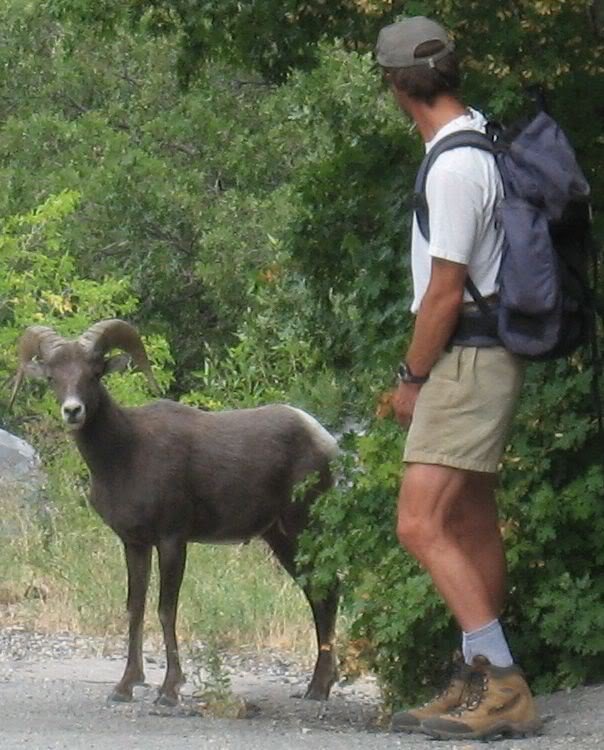Announcing Our 2022 Volunteers of the Year
You've heard us say it a thousand times, but it's true: our volunteers are the best. Our team continues to be moved by your dedication to wildlife, lands, and each other. Thank you for all you’ve made possible this year, and for inspiring our team.
If you missed our Volunteer Thank You Bash, be sure to check out our volunteers of the year for 2022. (We promise it’s just the uplifting thing we could all use!)
Overall Volunteers of the Year: McKinstry Group
We’re proud to announce our overall Volunteer of the Year is an entire team this year! The McKinstry group of engineers has been all over Utah’s streams this year as part of our Riverscape Restoration work, using their skills to mimic nature’s engineer, the humble beaver. Thank you so much for your dedication, McKinstry!
Learn more about their incredible team with our interview below:
What does volunteering mean to your team?
McKinstry is committed to making a positive difference in our local communities, largely through three priorities: lift up future generations, protect and restore the planet, and advance equity and social justice. McKinstry enables employees to volunteer their time towards furthering these causes locally, making an impact for the community in which we live and work.
What originally drew your team to Sageland Collaborative?
We were looking for a place to be outside, work with our hands, and improve the outdoor spaces our team enjoys in their free time. Finding Sageland Collaborative, their mission to provide science-based strategies for wildlife and wildlands is clearly in line with McKinstry’s core vision to build a thriving planet. Sageland sets themselves apart with solid organization and communication, making them an easy, welcoming partner to coordinate volunteer efforts and help facilitate positive change.
Why is stream restoration important to the team?
Our local team in Utah is intimately aware of the current drought and water conservation issues we experience every day. By helping to revitalize wetlands and improve our local watersheds through stream restoration, we can help make a small contribution towards a sustainable, healthy community.
Every year when planning McKinstry volunteer activities, the feedback from the team is that they continue to enjoy the Sageland events and want to keep them going. Many people mention after the event how nice it is to take a break on a Friday from work/the office, get outside, get a little dirty and sweaty, build/restore things, and be around fellow coworkers.
What would you say to similar groups looking to get involved?
Working with Sageland is a great way to spend the day outside, work with your hands, and complete fun and fulfilling projects. Sageland makes it easy to plug in and learn about the issues in our backyards. They do a great job planning and organizing plenty of events throughout the year.
Boreal Toad Volunteer of the Year: Candice Clark
A huge thank you to first-year volunteer Candice Clark for all of your work on the Boreal Toad Project this year! We can’t wait to see you in coming years and are grateful for your passion.
Candice says the following of her experience with conservation and wildlife:
“I started really thinking about my carbon footprint and what I could do to minimize it when my kids were young. They’d come home from elementary school and taught me things I just didn’t know: how bad cows are for the environment, how much plastic waste is floating in the middle of the Pacific Ocean, how damaging plastic waste is to wildlife in the oceans and forests, and how the health and wellness of amphibians is a good indication of how good (or bad) our environment is. My kids are the ones who taught me, but I’m the one that can do something about it! I started making small changes like using reusable shopping bags, recycling as much as possible, eating less meat, and being more aware of my surroundings. The more I learned, the more invested I became.
I’ve read about the Boreal Toad surveys for a few years now and have always wanted to participate, but it took my (adult) child, who is also very interested in wildlife conservation, to get me there.
Once I committed, I went to every survey I could. The experience is more than finding cute toads and weighing and measuring them, but of course that’s about the best thing ever! I’ve also met some really amazing people who have each brought their passions, experiences, and knowledge to every event, teaching me new ways I can get more involved.
At first I thought that I can’t make a difference, being just one person. It can feel quite intimidating to take on one of the world's biggest problems. But I’m really glad my kiddo pushed me to take the first step. Now I can take another and another. Thanks to the huge enthusiasm of one of my co-volunteers on the Boreal Toad Project, I was excited to also join the Riverscape Restoration project this Fall.
One of the most amazing experiences I had this year was going into the scout camp that hadn’t been used for a few years to find DOZENS of 1st and 2nd year toadlets! It was so neat and heartwarming to see the toads thriving, breeding and surviving. This is a perfect example of how we as humans really need to be much more aware of our wildlife friends in order for us all to survive and thrive. If we spend as much energy being considerate of the wildlife around us as we do in having fun in the outdoors, I believe it can go a long way in helping endangered species and the overall wellbeing of our plant.
I look forward to returning to the Boreal Toad Project again next year. I know I’ll learn even more about why this project is important and what more I can do.”
Stream and Riparian Restoration Volunteer of the Year: Quinn Marcroft
Quinn came across one of our projects while hiking. She dove in then and there and hasn’t looked back! In addition to our project work, she has also gone the extra mile to adopt multiple sites as a habitat steward.
Thank you so much for your work as you join our dedicated group of volunteers, Quinn! You inspire our team. Check out what Quinn says about her experience:
“I first got involved with Sageland Collaborative by chance. I was hiking and saw people planting trees along the stream, so I decided to join them. I was grateful for the opportunity to observe each plant growing. Since then, there has been so much growth, and it makes me happy. From there, I got involved with the Boreal Toad Conservation Project and Utah Water Watch.
As a volunteer, I want to support wildlife conservation because nature has been so healing for me, and I want to give back. Whenever I’m having a hard day, I try to get out, and the outdoors helps me feel better. The thing I love most about the wildlife around me is the excitement of seeing each animal. I love seeing wildlife, and am always eager to observe.
Overall, volunteering is very rewarding. It gives you the opportunity to care for something beautiful. It helps me feel like I’m making a positive impact in the world.”
Rosy-Finch Volunteer of the Year: Steve Van Winkle
Steve Van Winkle has been a huge contributor to Sageland Collaborative’s work over the years, including recent work moving the Rosy-Finch Project forward by contributing to vital species data collection. Thank you for all your work for wildlife and conservation, Steve!
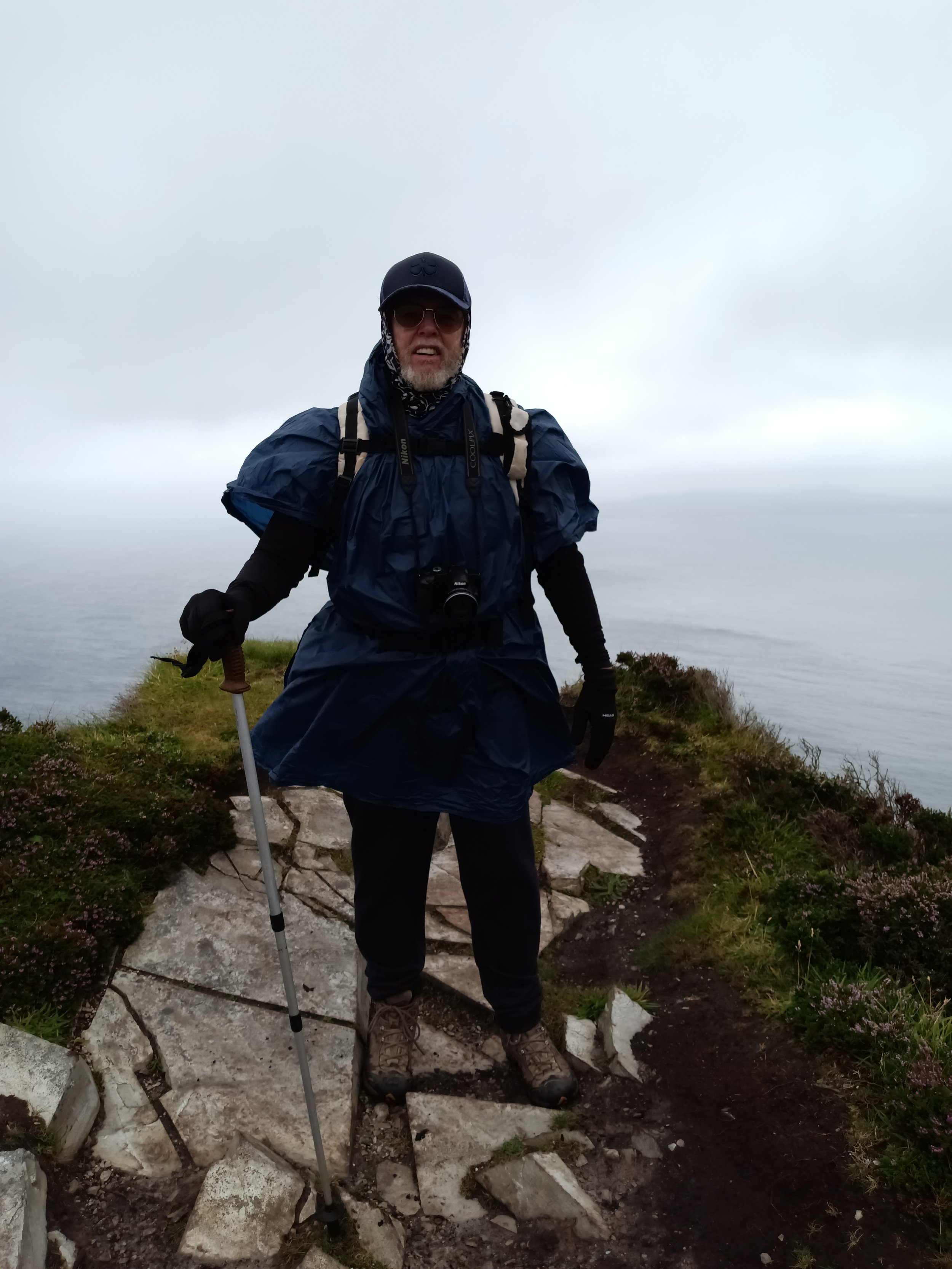
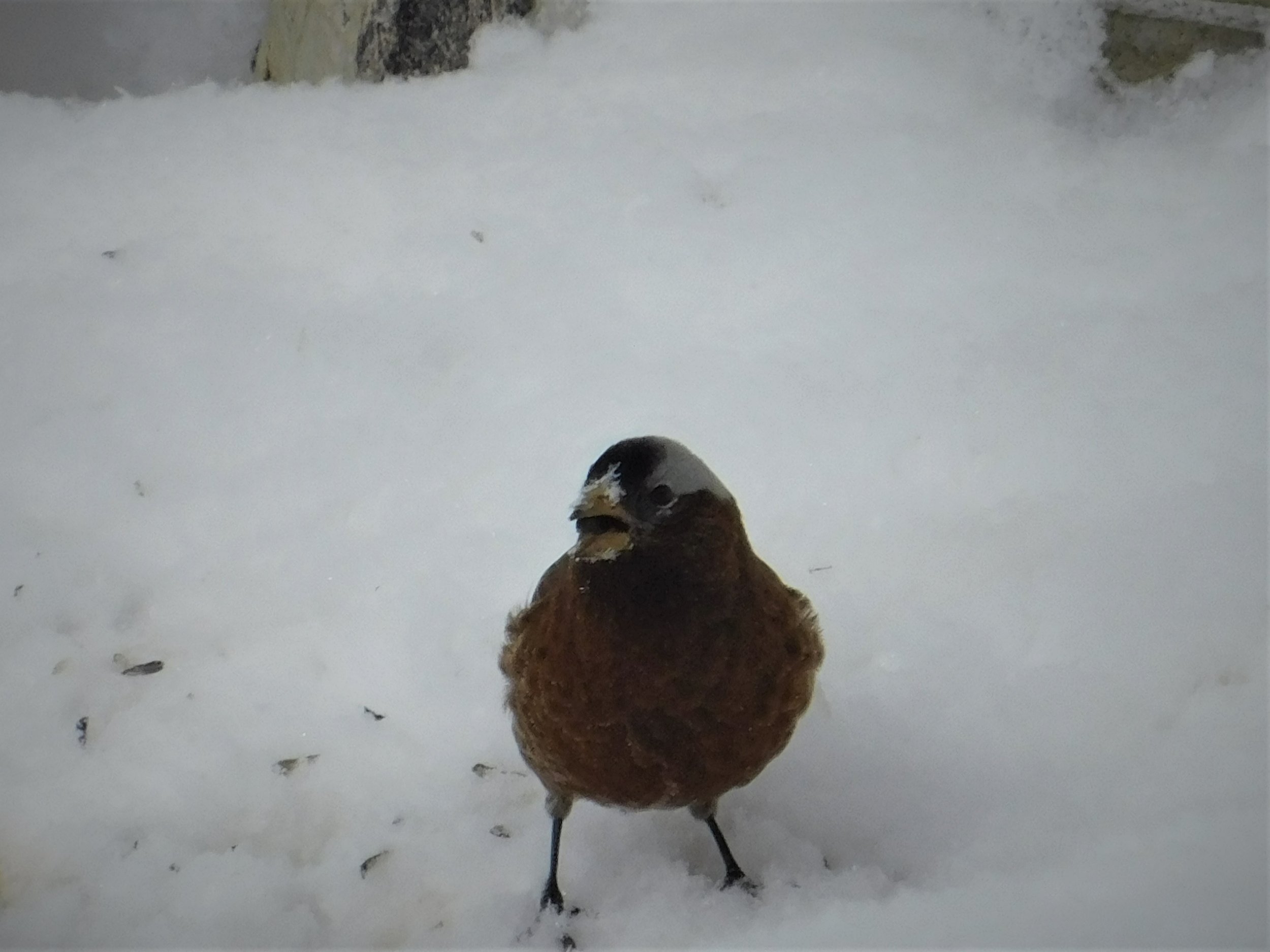

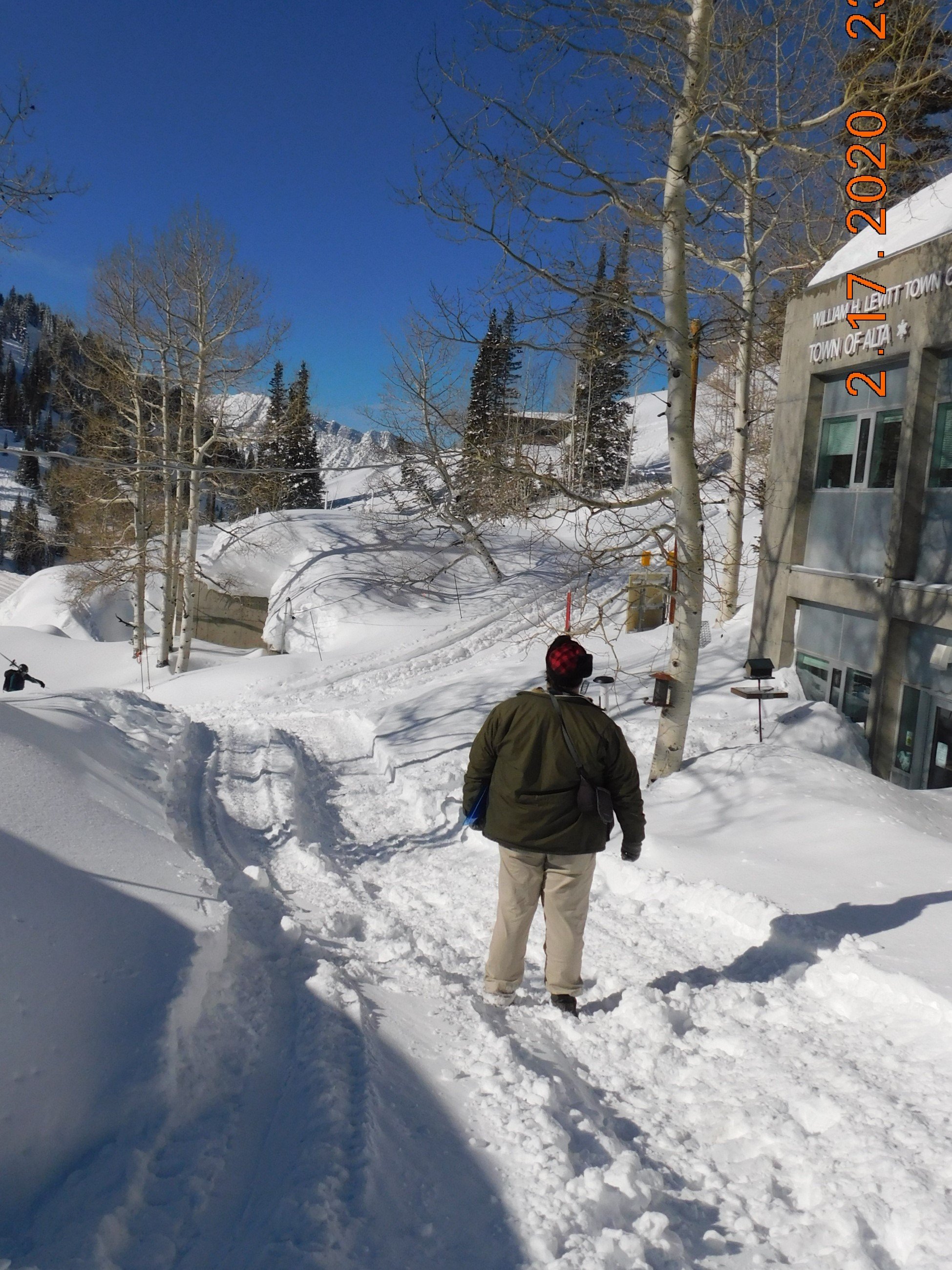
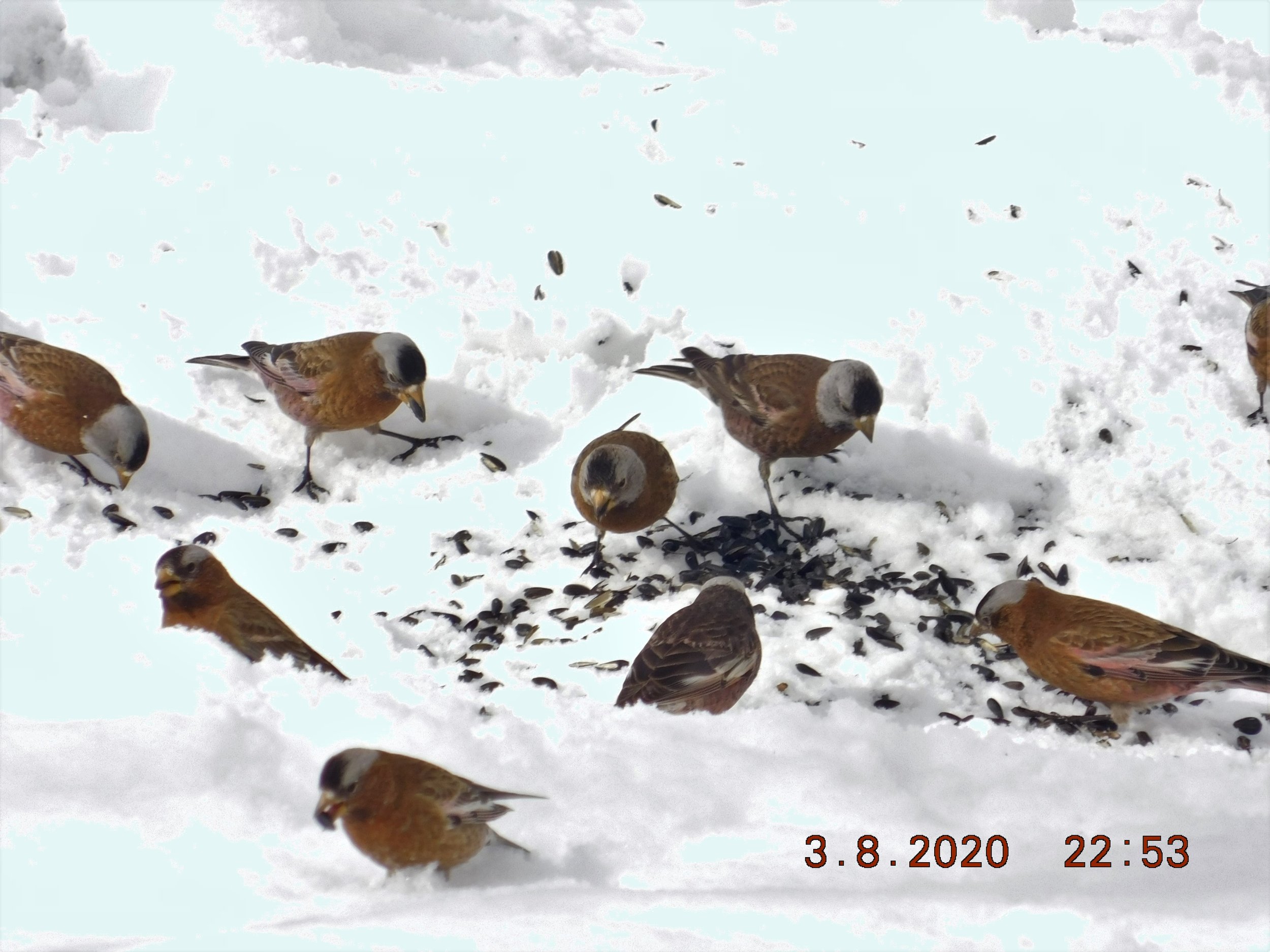
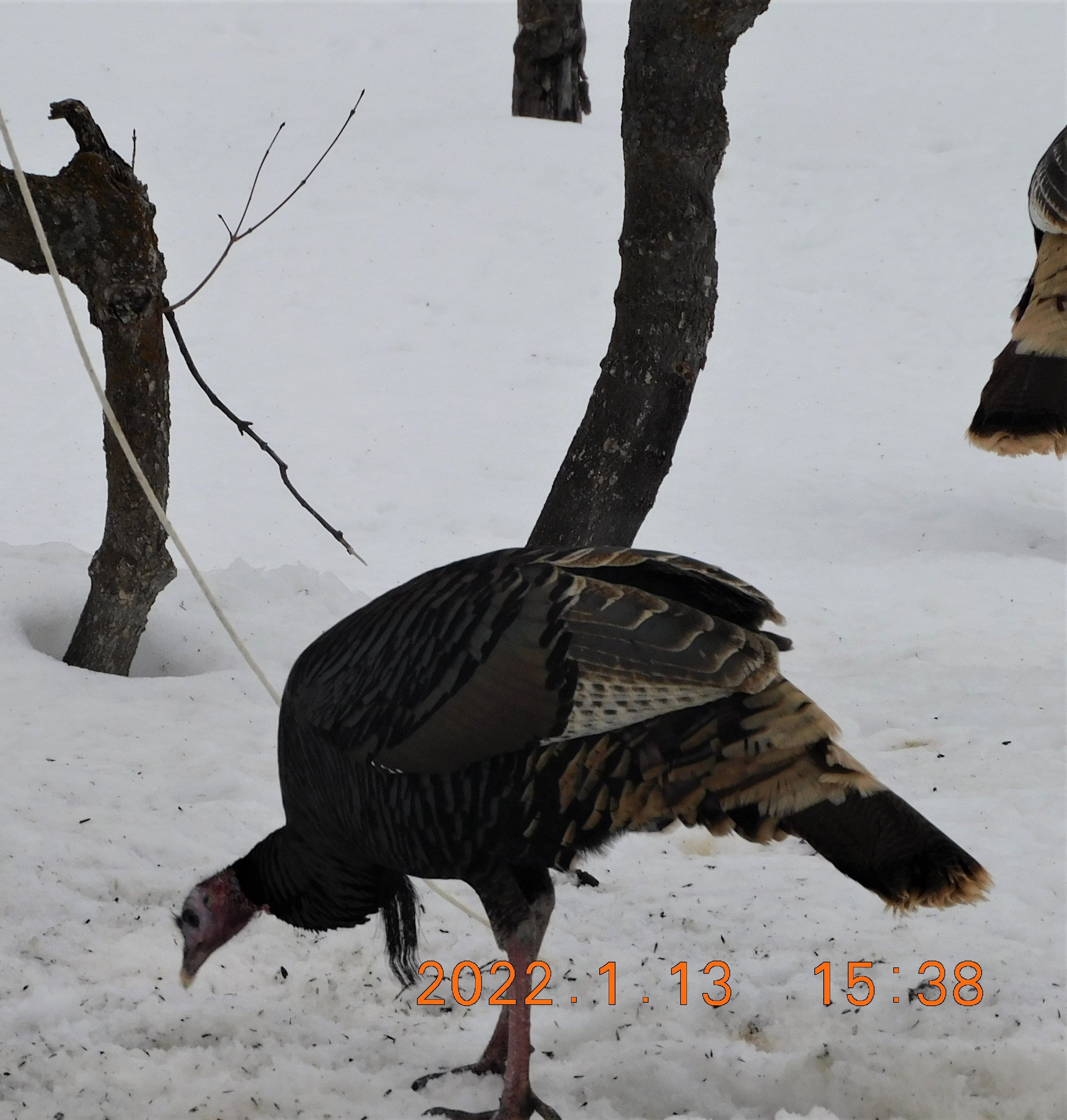
Learn more about Steve below:
Steve began volunteering with the project in 2018, and he has loved photographing and observing finches and other feeder species. Like many Rosy-Finch volunteers, he loves the winter season and mountain activities, from hiking to snowshoeing at Solitude and Nordic Center feeders.
Steve’s wildlife origin story comes from fly fishing at a young age with his grandfather in the lakes and streams in and around Grass Valley, California. He moved further into the world of wildlife and conservation working for Idaho Fish and Game as a biological aide and studying zoology at University of Idaho.
Steve says of his experience volunteering: “I remember my excitement of seeing and photographing my first Black Rosy-Finch at a feeder station. I hope educational projects involving citizen scientists, like Sageland Collaborative and other similar organizations’ work, will result in the preservation and conservation of animal species and their essential habitats, initiated by the public forum and action.”
Shorebirds Volunteer of the Year: Michael Malmquist
We’re grateful for the hard work of Michael Malmquist on our Wetlands and Waterbirds project. Mike spent many hours surveying the lake with his son Max. Thank you for all you’ve done on this project, Mike, and for your love of wildlife and lands!
Enjoy Mike’s beautiful photos of Great Salt Lake, and get to know him in his interview below.
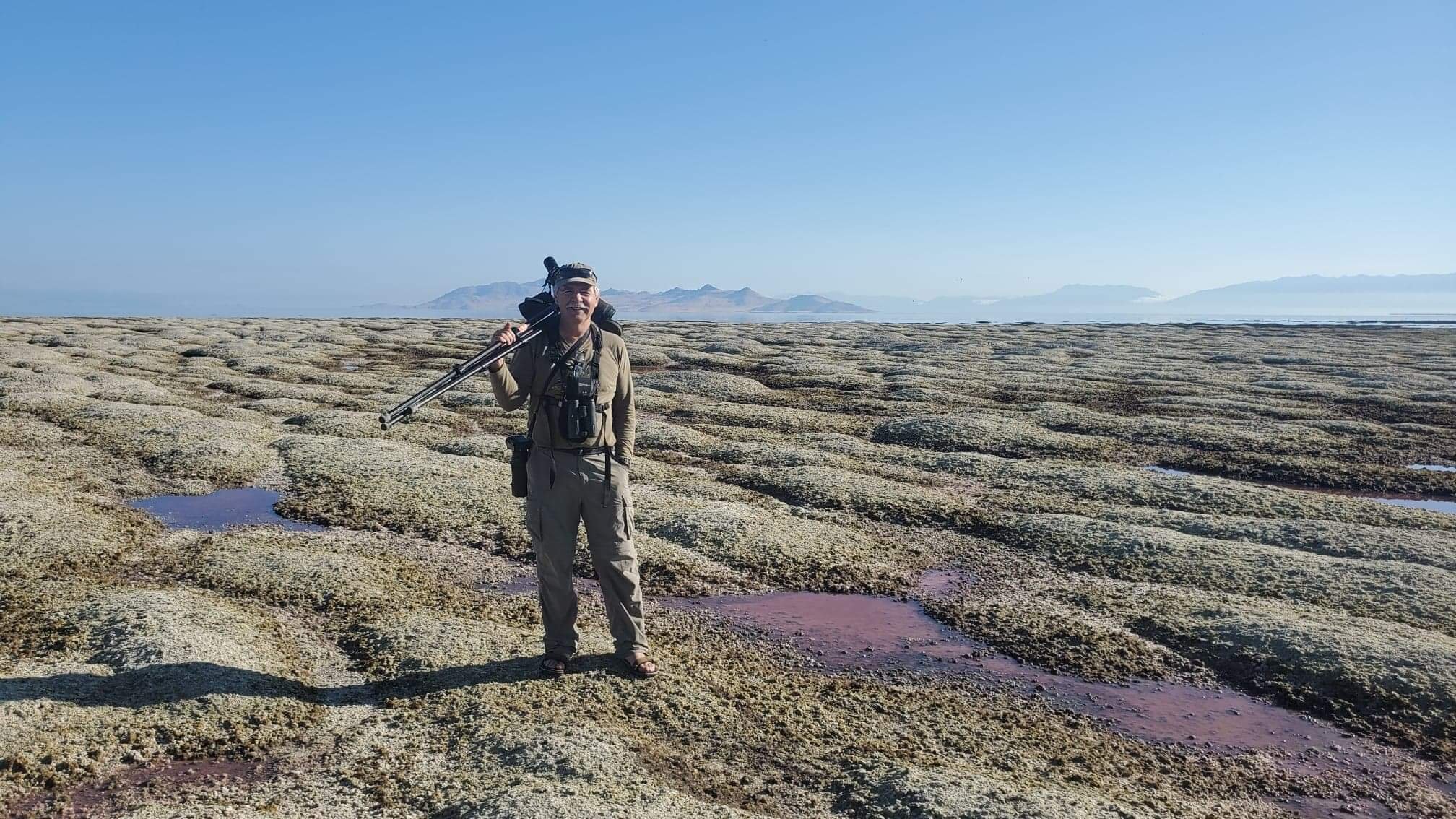
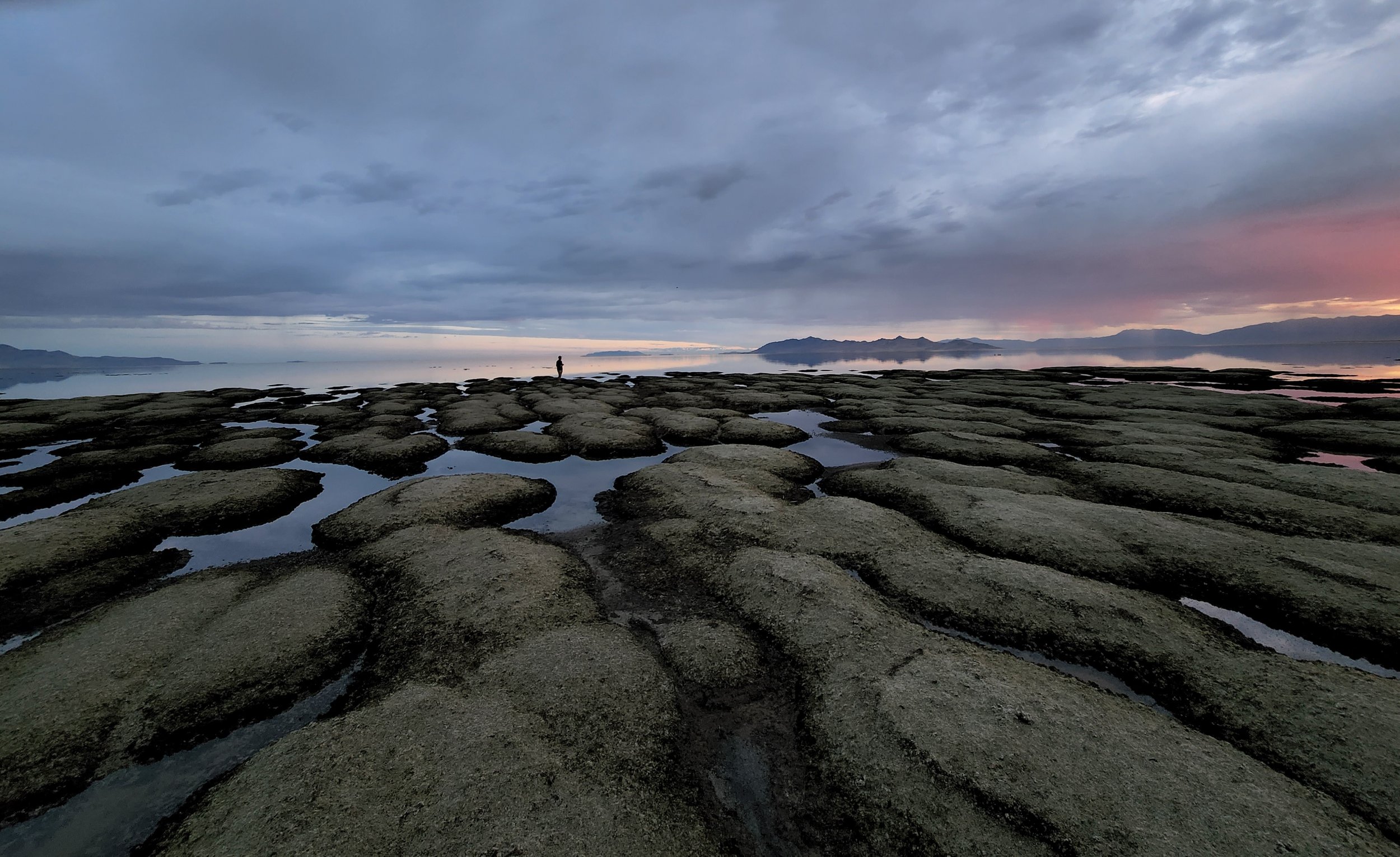
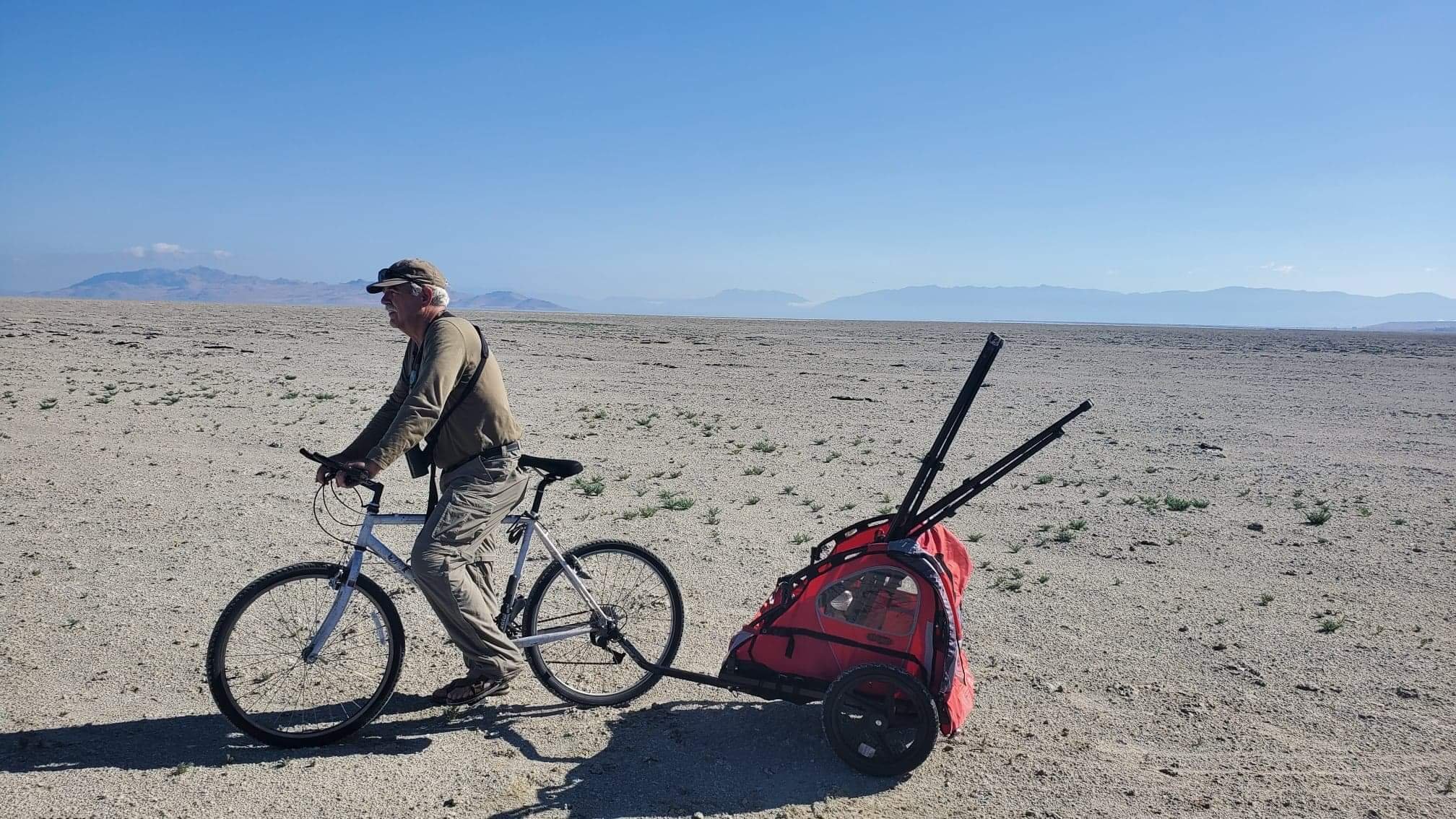
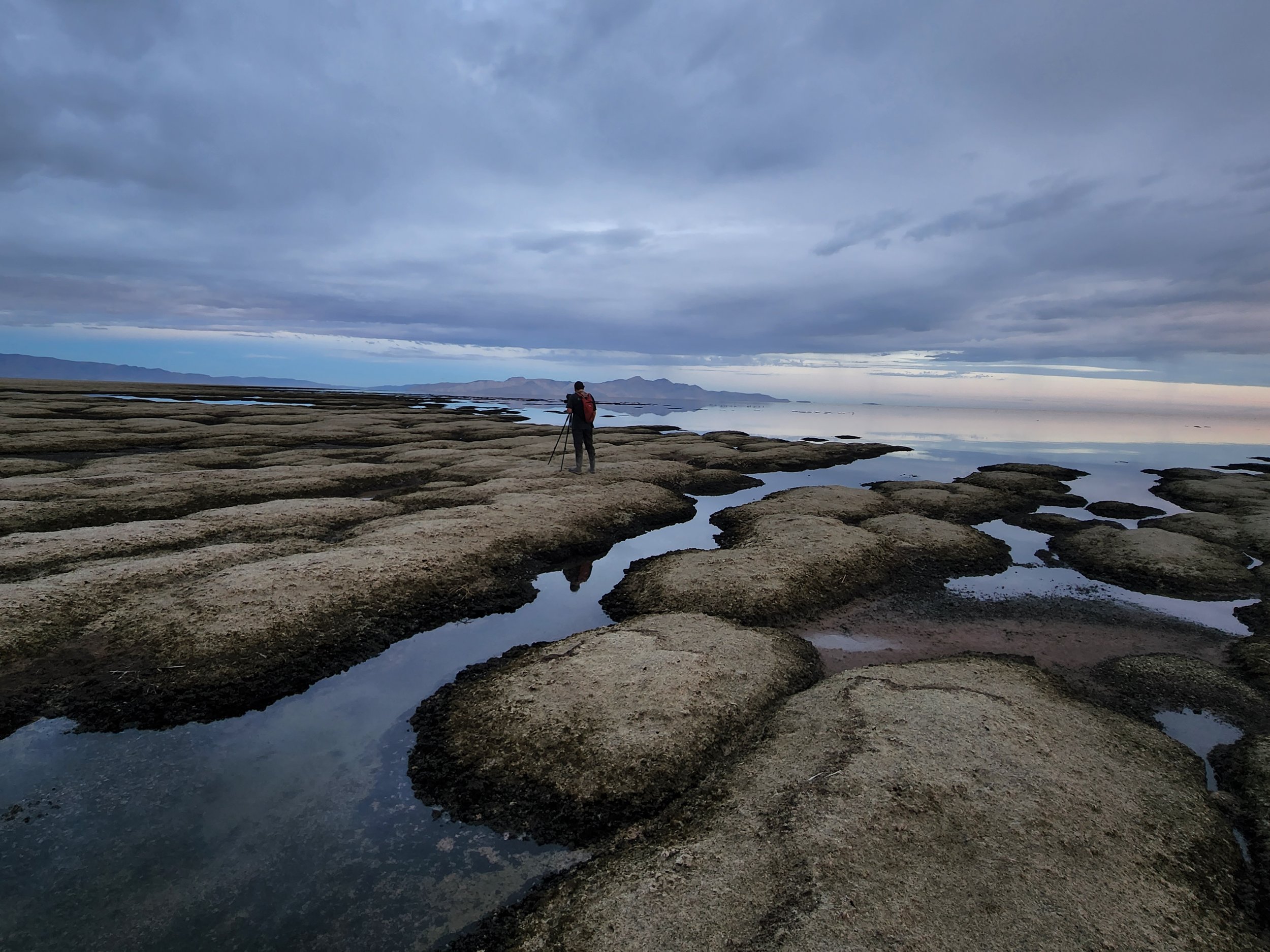
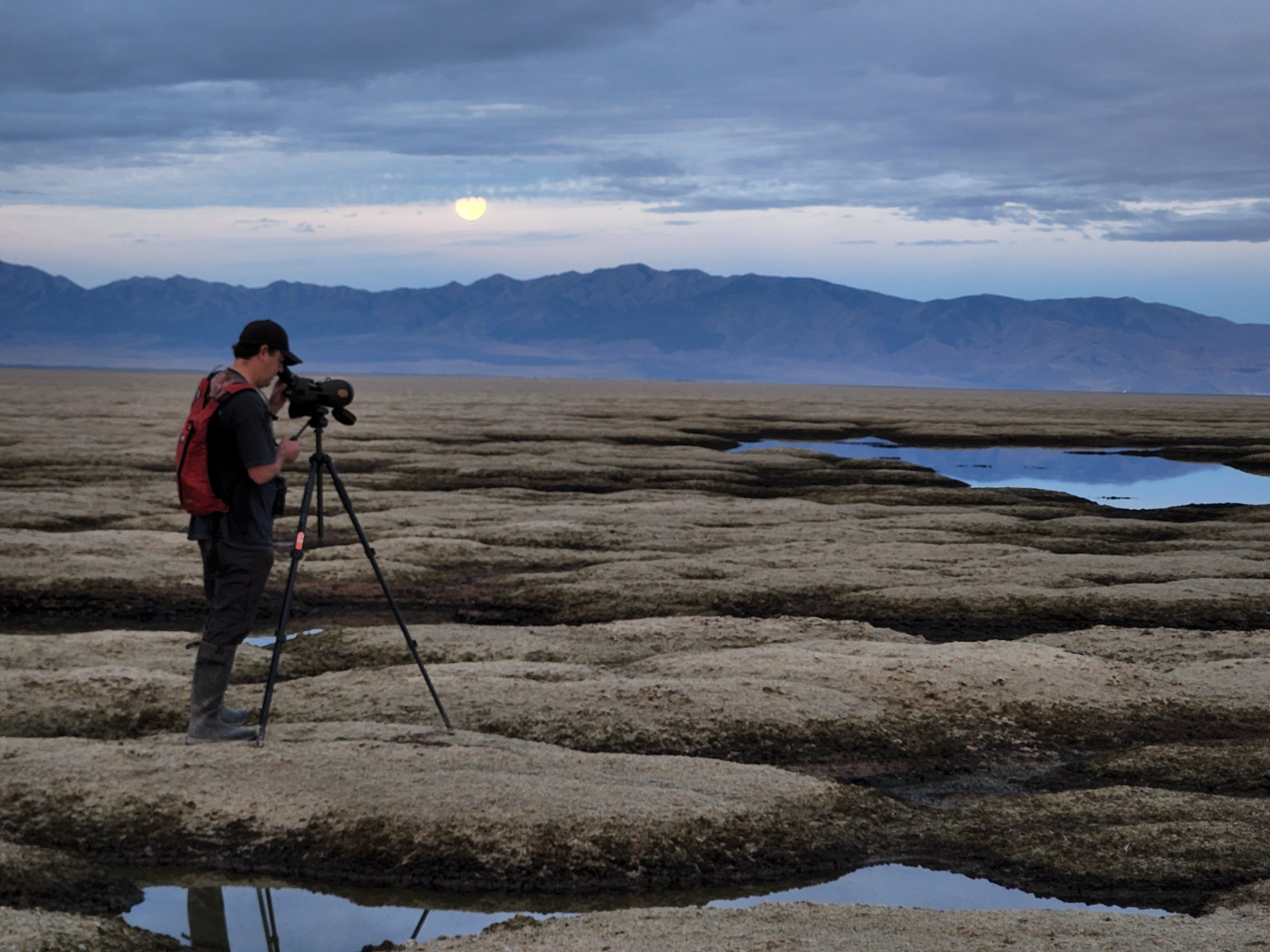

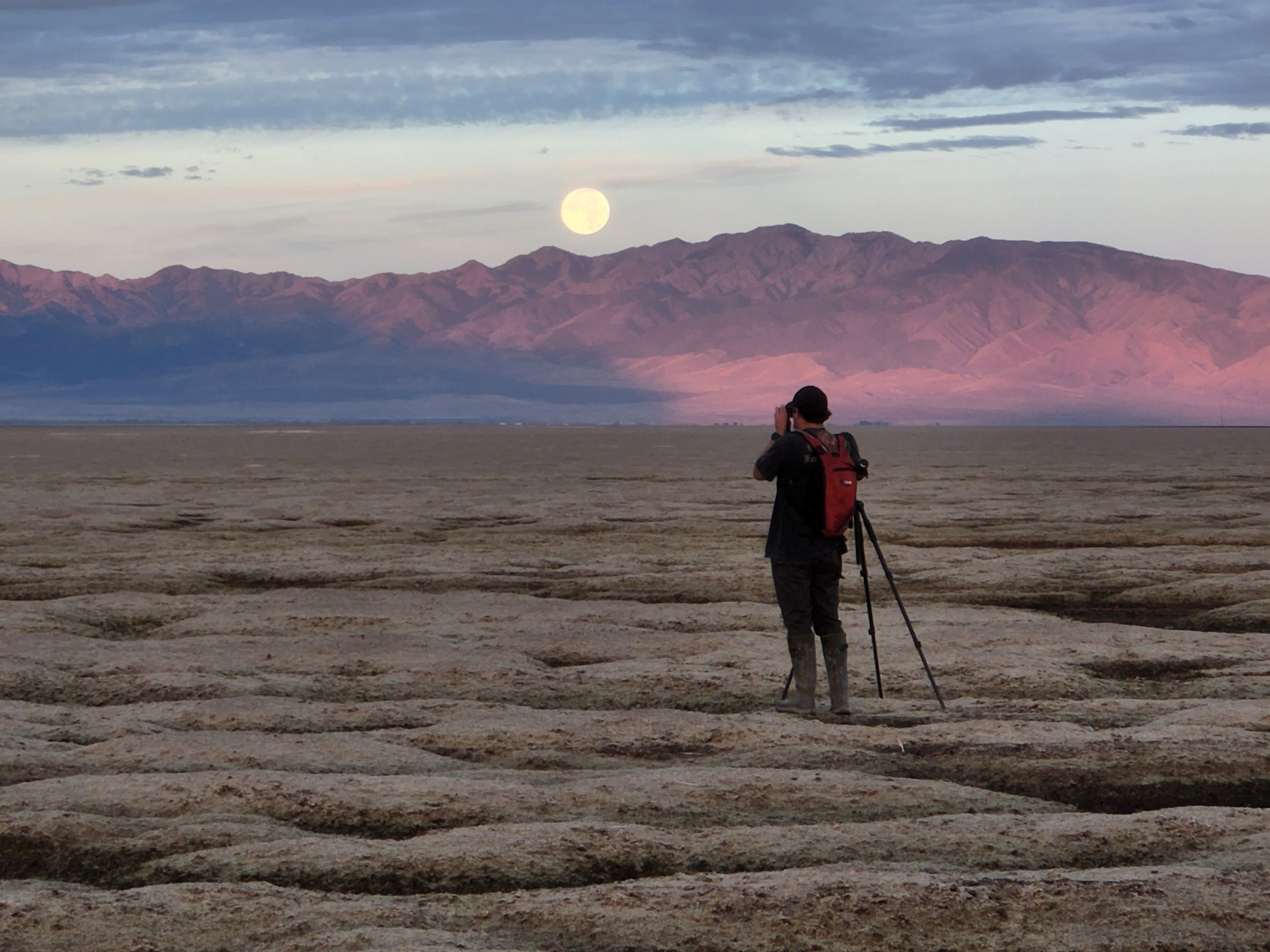
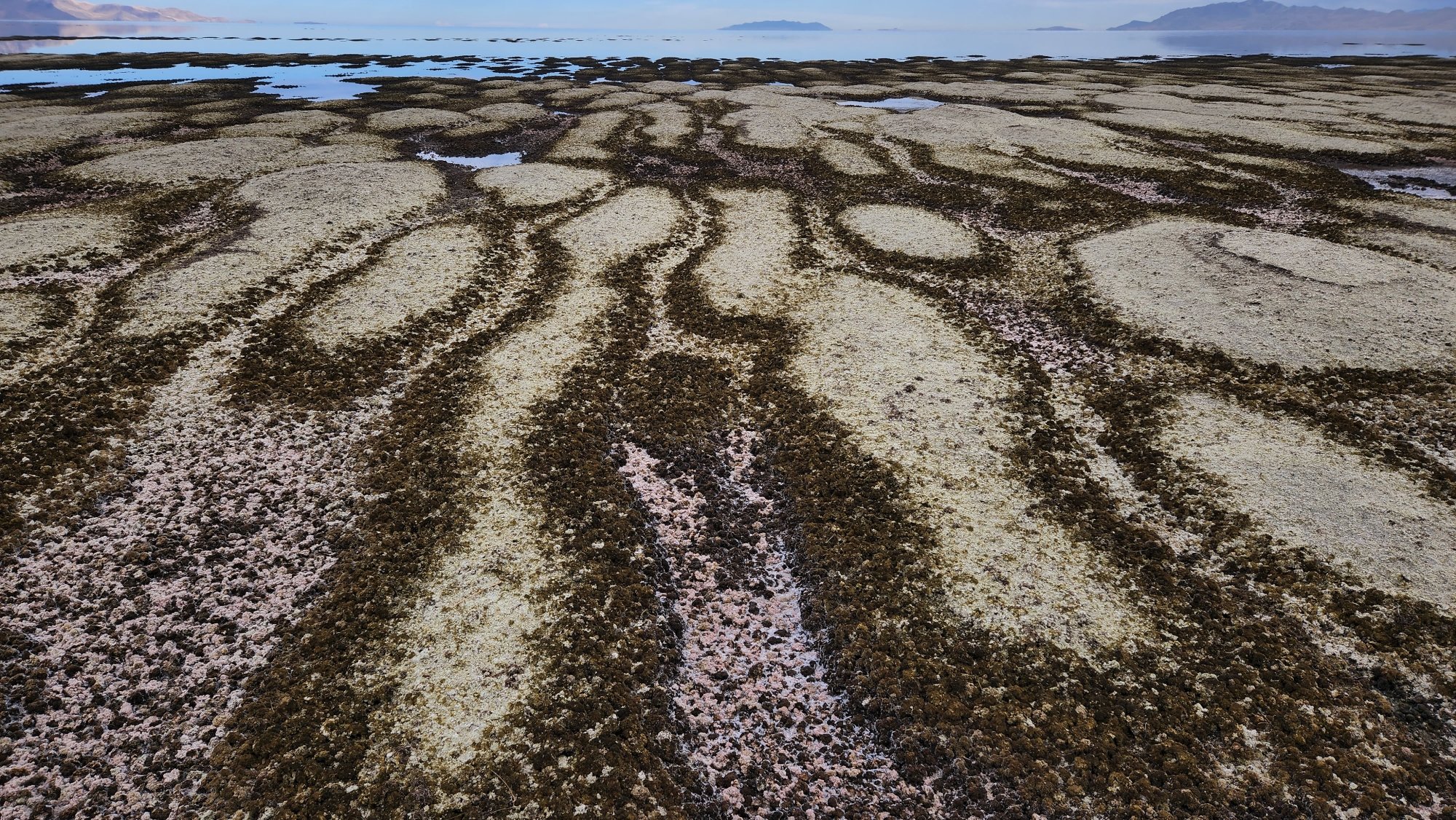
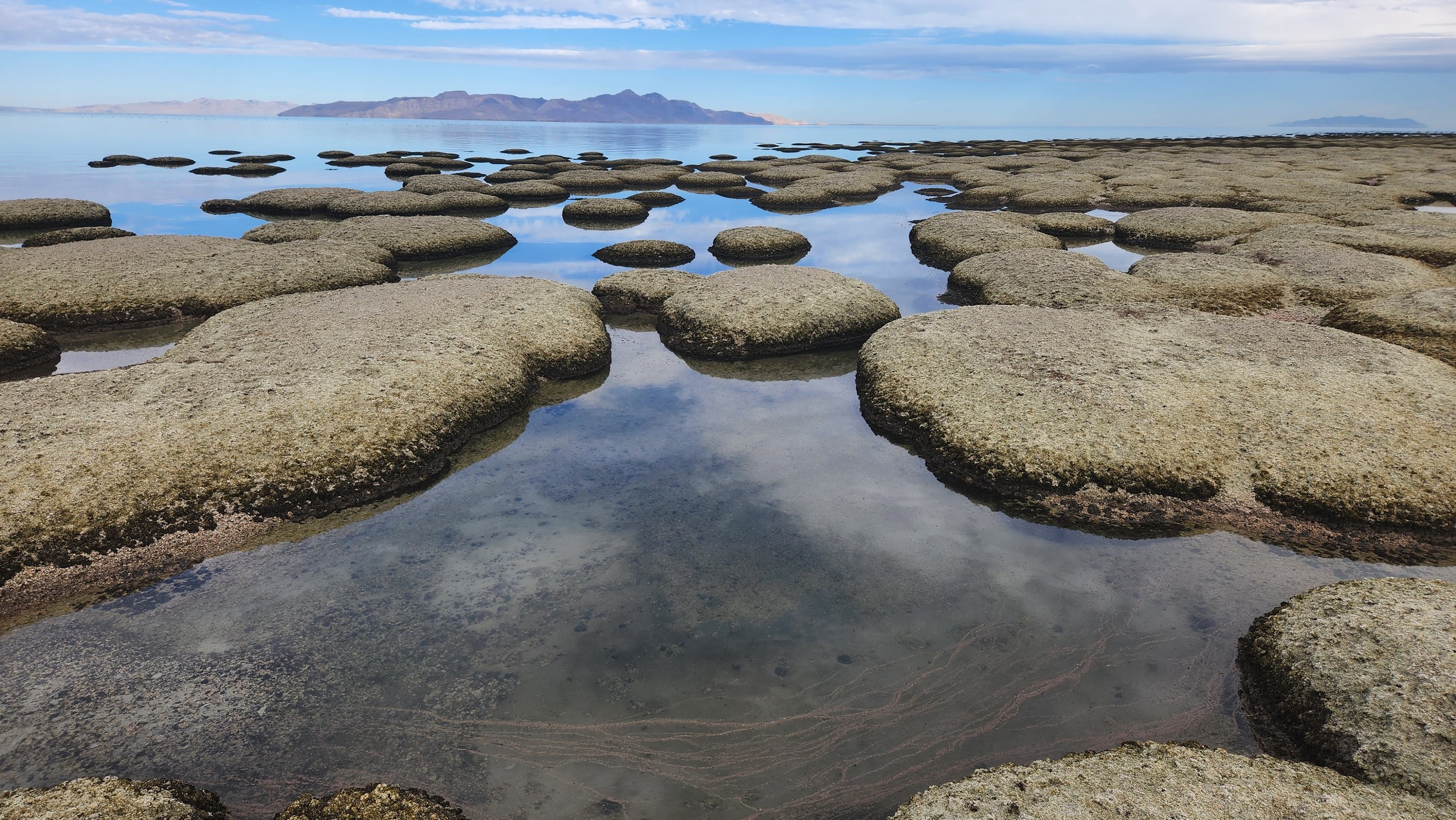
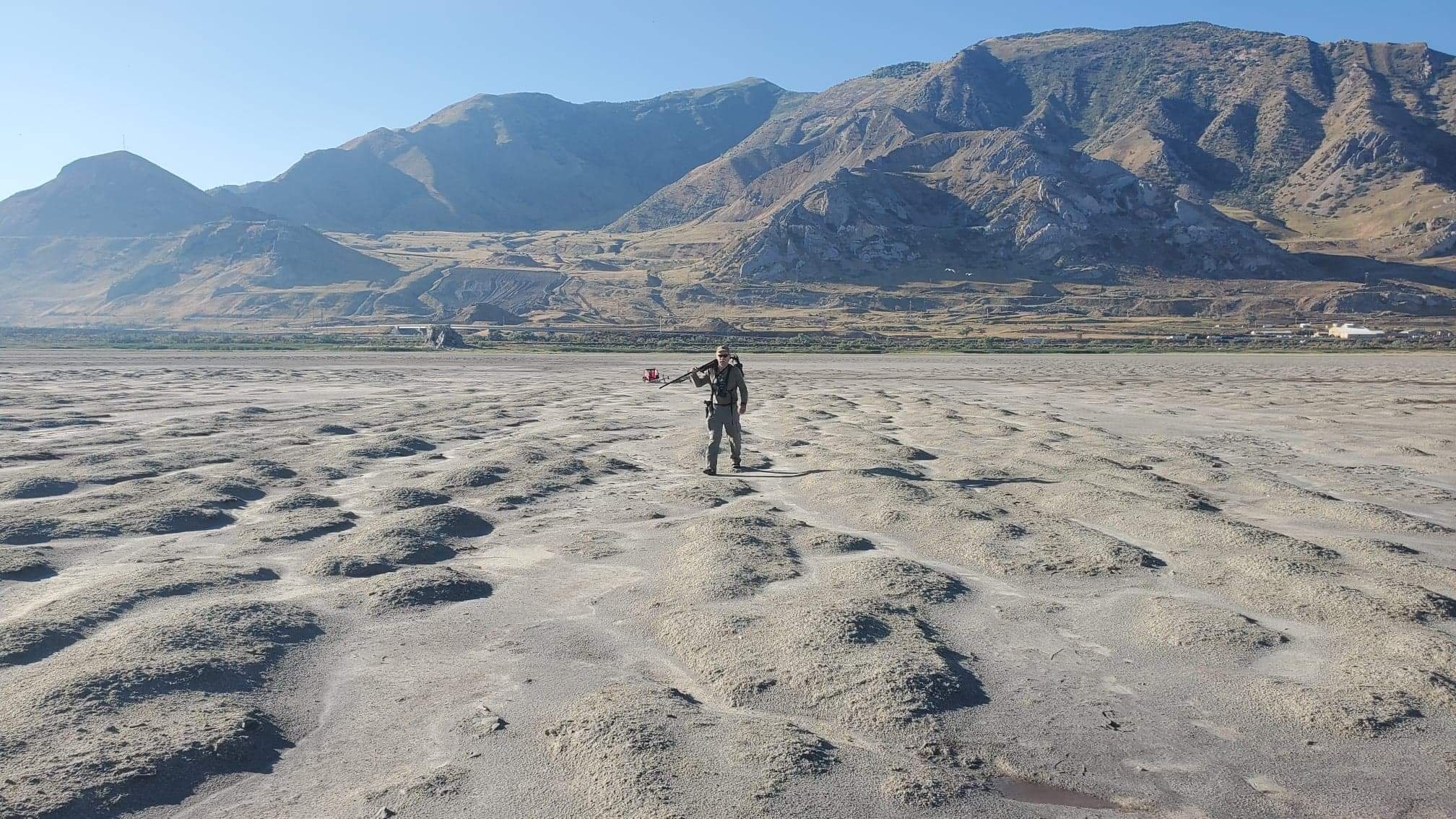
How long have you been involved in shorebird work, and what excites you most about it?
I’ve been actively involved since February, when my son Max and I reconned a couple of shorebird survey sites in Idaho as part of birding trip, and then took part in various training, recon, and survey activities in Utah and Nevada in July and August.
I’ve loved learning about shorebirds, their habitat and migration in the Intermountain Region, and particularly about the Great Salt Lake, although the more I’ve learned the more concerned I’ve become about the fate of the habitat and the birds. I’m worried that policymakers have woken up to the dire water situation too late, and we may not be able to salvage some of the most important habitat, including the Great Salt Lake.
What sparked your love for bird conservation?
I fell hard for birding after spending several weeks during warbler migration doing daily dog walks in a migrant trap in Minnesota, while tending to my ailing father. Who knew there were dozens of tiny birds, in a kaleidoscope of colors, darting around in the tree tops? How, during a life of hiking, hunting and working in the forests of Minnesota and the mountains of Utah, had I missed these remarkable little packages of energy?
I was hooked, and immediately started learning about birds and volunteering in Tracy Aviary’s Citizen Science efforts when I returned to Utah! That—together with tagging along with my son Max in the field and sharing in his work with Audubon and the Saline Lakes Program—has broadened into an interest in shorebirds and shorebird conservation.
Are there any notable experiences on this project that you'd like to share?
There are too many to list, but I’ll never forget an early morning survey on the shore of the Great Salt Lake set in a backdrop of a spectacular sunrise in the east, a rainbow to the south, and a setting full moon over the Stansbury Mountains to the west, while threading our way through mounds of green and pink microbialites spotting Snowy Plovers and Baird’s Sandpipers. A bittersweet experience indeed, given that the microbialites that were providing food and cover that morning were only days or weeks away from their demise.
What do you hope the West is like in the future, and how might your work contribute to this larger vision?
When I retire in the near future, I plan to continue to volunteer in the field and become more active in the policy aspects of conservation of shorebirds and other birds in the West.
Anything else you’d like to share?
I’m continually impressed by and thankful for the people whose avocation is to study and advocate for the habitats and wild creatures of this earth. I say that from the bottom of my heart, as someone whose love of these things started young and has only increased as I’ve grown older.
Utah Pollinator Pursuit Volunteer of the Year: Bill Oldroyd
We’re excited to honor Bill with the award this year for all the work he has done on Utah Pollinator Pursuit. At this year’s Volunteer Thank You Bash, Bill was spotted chasing a monarch—and he ended up logging it then and there. Thank you so much for your inspiring work and love of pollinators, Bill!
Learn more about Bill’s work with pollinators below:
What experiences have led you to pollinator conservation?
I think my parents and family would attest to the fact that I’ve always loved animals, bugs, and the outdoors. I began an interest in birdwatching in 1994 by learning what species I could attract to my backyard, and I’ve been providing water year-round and seed since then.
In the last five or six years, I began to grow sunflowers in my yard as a way to attract more birds. I started to notice that bees loved them as well. Also during this time, I noticed a bumblebee was visiting an undisturbed piece of my yard—I think to nest, though I don’t recall seeing them in large numbers. I also planted some Showy Milkweed and Butterfly weed in my yard in hopes of attracting Monarch butterflies.
In the summer of 2020, I was looking for information on Monarchs in Utah and stumbled on a website that Mindy Wheeler had put together, which included information on the Survey 123 app. That’s when I began to help by sending observational information.
What was this year like for you on the project?
This year was a great year for Monarchs, at least in my yard! In 2020 and 2021 I was fortunate if I saw one Monarch, but this year I have seen them on at least 14 occasions. Also, in those first two years of paying closer attention, I found around 19-20 eggs laid each year—but this year we had more than 70!
What do you hope the West is like in the future? How might your work contribute to this larger vision?
I think the West needs to do what it can to return to more of its original habitat. Homeowners, cities, counties and States need to make concerted efforts to restore habitat that has been lost over the decades or at the very least do things to improve conditions for nature around us. I think scientists and local leaders, however, need good data to make wise decisions. This is why I wanted to help. I’ve also loved getting neighbors involved, especially those with kids, in supporting Monarchs and noticing nature.
I think it’s going to take getting more average citizens involved in projects like this one and to become “citizen scientists”. More of us need to take real notice of the plants, animals and insects around us and the things we do to influence them.
Wasatch Wildlife Watch Volunteers of the Year: Mary Ann White and Peter Mimmack
Mary Ann White
Mary Ann has been with Wasatch Wildlife Watch for multiple years, hiking all over the Wasatch and contributing crucial data to the project. Thank you so much for being one of our most consistent volunteers, Mary Ann!
Learn more about her and check out her amazing wildlife images below.
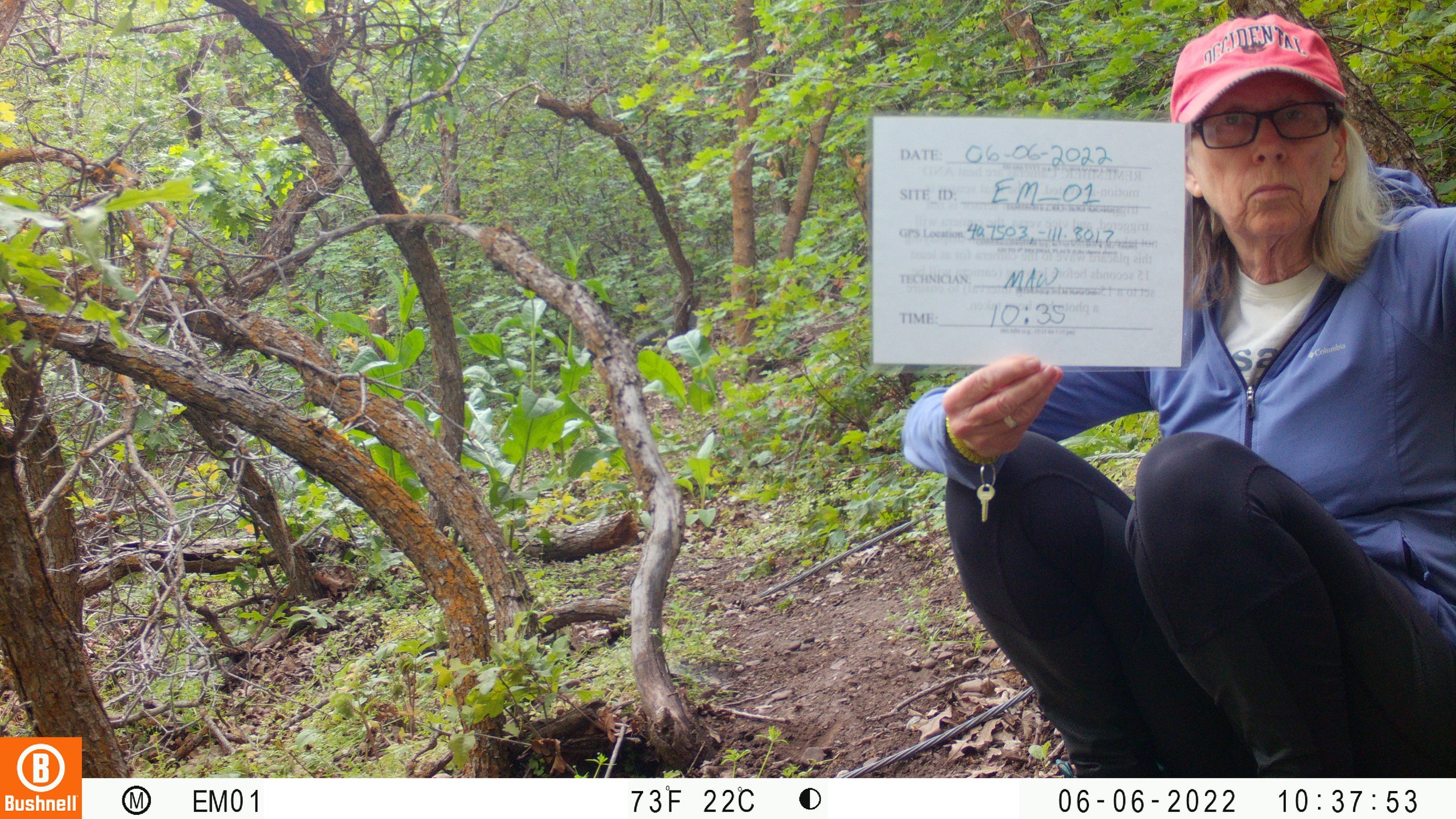
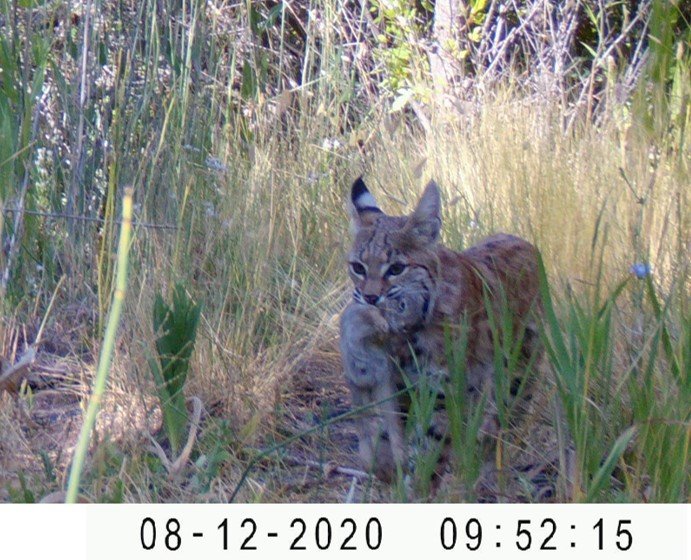
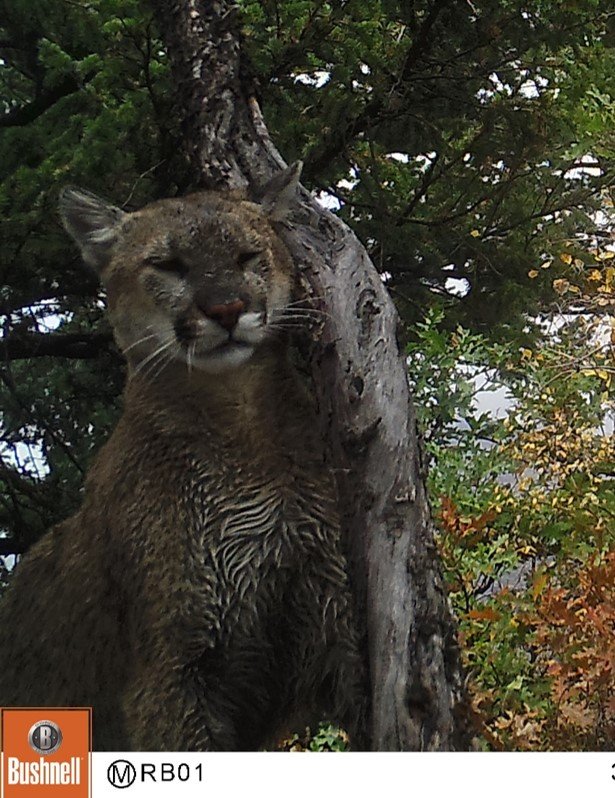
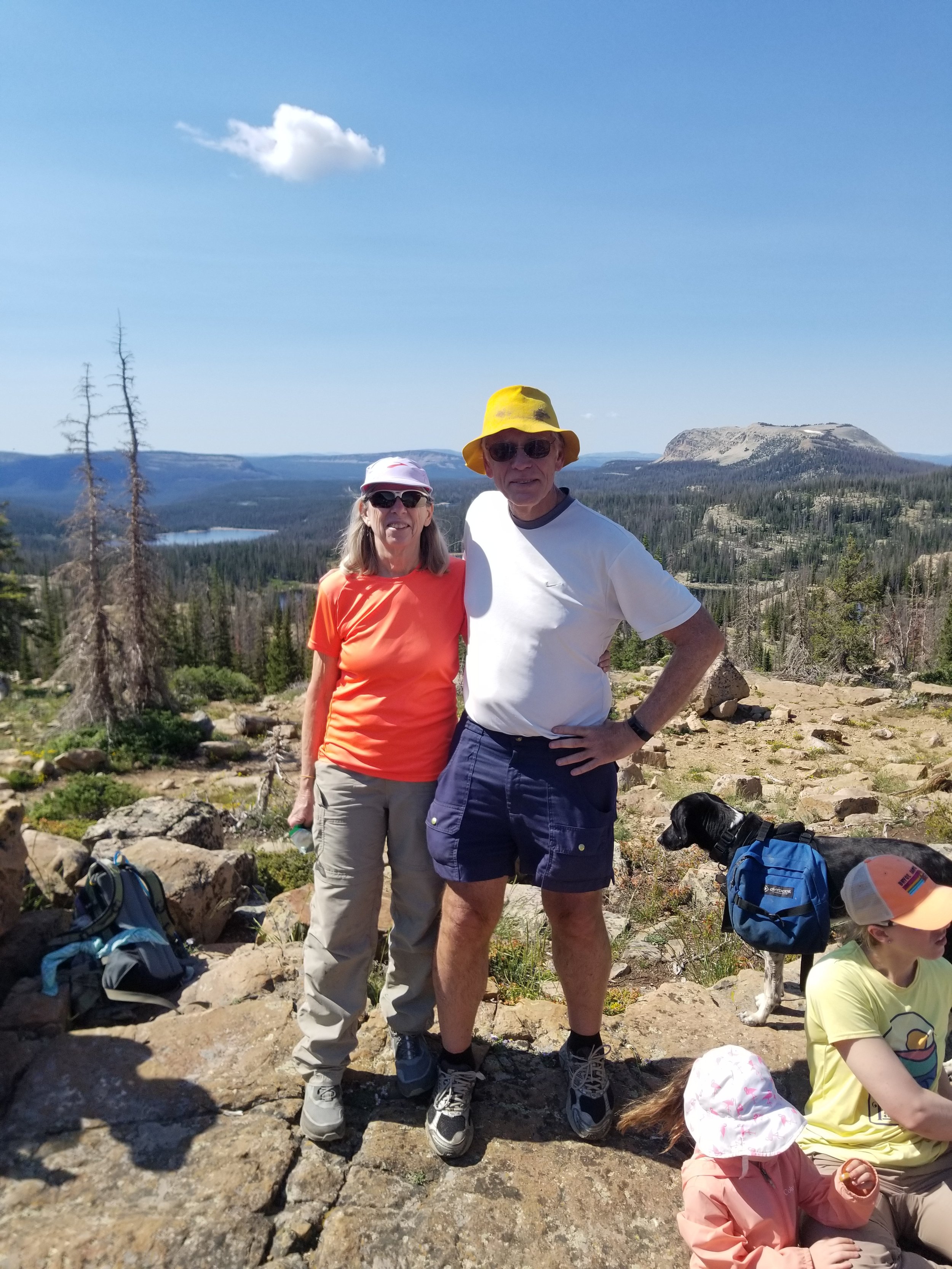
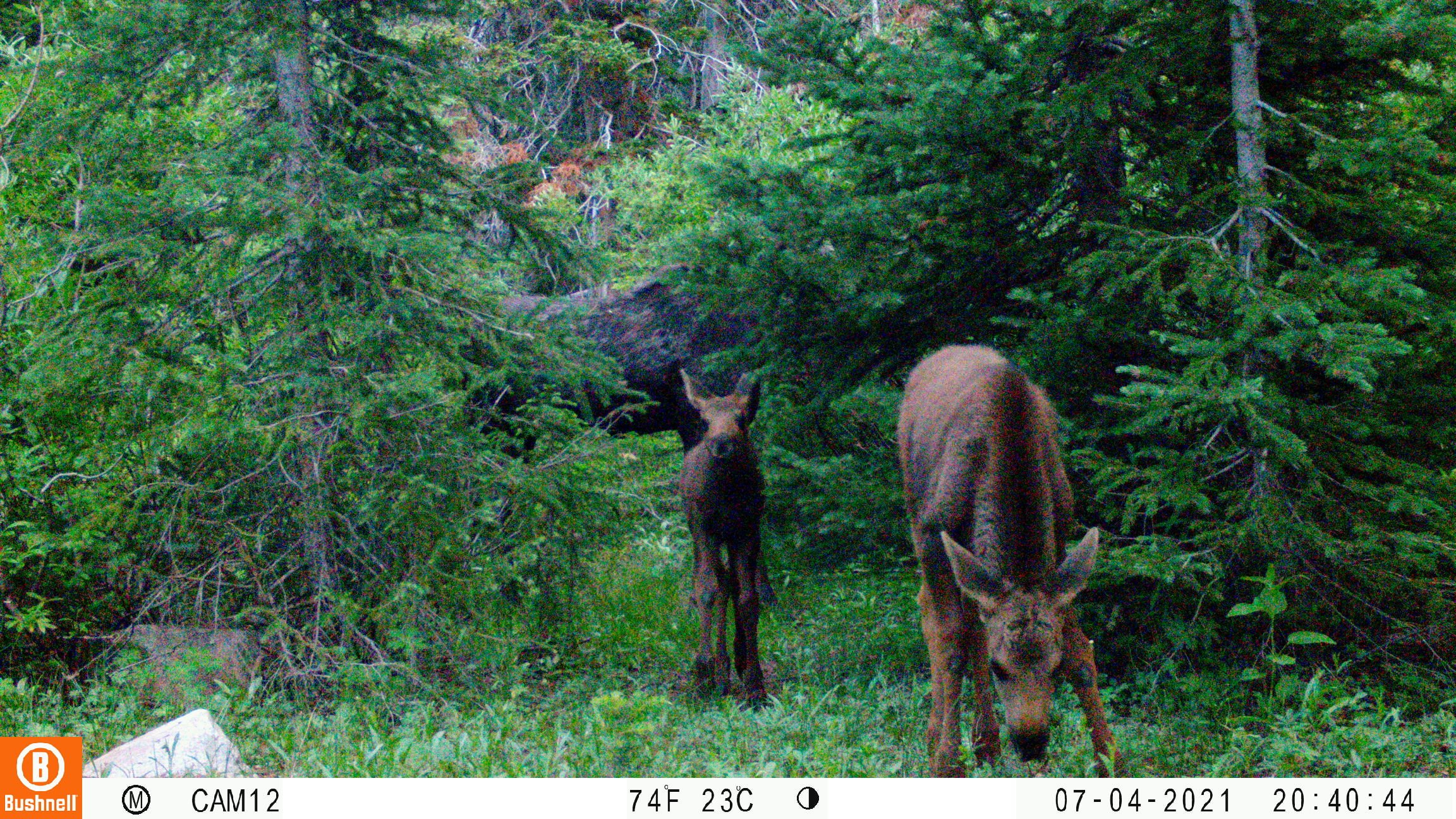
How long have you been involved in Wasatch Wildlife Watch, and what originally drew you to participate?
I've been involved with Wasatch Wildlife Watch (WWW) since the summer of 2019. I had recently retired and was looking for a volunteer opportunity that would take me outside. I saw an article in the Salt Lake Tribune about WWW, and that seemed to be a good fit for me. I am interested in wildlife and conservation, so the goals of the WWW effort fit the bill. I’d love to be involved with other Sageland Collaborative projects in the future as well.
What has been your favorite part of volunteering so far?
I love seeing which animals have visited the camera site. I've seen photos of moose, cougars, and bobcats along with the more common deer, fox, etc. The sites I've been assigned are not remote, so it's amazing to see the diverse wildlife so close to roads, living areas, and hiking trails. I also appreciated being able to visit Red Butte Canyon with Austin and his team, since the conservation area is not open to the public. It's fantastic to have such a beautiful and unspoiled area so close to the city!
Do you have any field stories that you'd like to share?
One of my sites was visited by a mother cougar and her two cubs. They chilled in front of the camera for a while, which was fun to see. The cougar also liked to rub up against the camera—I guess she was claiming it as her own. I realized when I reviewed the images that on one occasion, I came to the site about an hour after the cougar had left.
I also had to keep a close eye on a moose that I noticed while I was counting the number of cars passing by at one of my sites. I packed up the camera and left in the opposite direction ASAP.
What keeps you going as a volunteer, and what have you learned?
I'm concerned about the ability of wildlife to survive and thrive as development encroaches on their habitat. The data collected by WWW ideally will help mitigate the effect of human activities on wildlife. The presence of wildlife in our surroundings enriches our experience and connects us to our environment.
I've been interested in how the data collected by the WWW project are analyzed and used. The presentations shown during training and the papers submitted for publication have been interesting and informative.
What originally led you toward wildlife conservation, and what is your hope for the future?
I grew up in the East, but now have lived most of my life in the West. I had always loved being outdoors, but gained a special appreciation for the outdoors due to access to public lands in the West. We need to conserve these open spaces to allow future generations the joy and respite of spending time in wild spaces.
I hope the public lands in the West will be managed so that truly wild places will continue to exist. I hope that climate change leading to mega-droughts and the impact of those droughts and high temperatures on wildlife can be ameliorated. We can all do our part to conserve resources and help blunt the effect of climate change. Decision-making that affects the environment and wildlife is best supported by data, and that’s why projects that collect and analyze data are so important.
Peter Mimmack
Pete is one of our core volunteers on Wasatch Wildlife Watch and has contributed huge amounts of information to our datasets. This lays the groundwork for conservation efforts like habitat restoration—or even wildlife bridges. Thank you for all your work for wildlife in the West, Pete!
Learn about Pete’s experience below (and don’t forget to check out his amazing wildlife videos included in the 2022 Volunteer Thank You Video):
“This was my fourth year as a Watcher, and I got involved due to the prompting of my wife. She's been a Natural History Museum of Utah volunteer and when she saw the notices about Wasatch Wildlife Watch, she thought it was the kind of volunteer activity that I'd enjoy. She was right.
My favorite part of the project so far has definitely been videos! Two years ago during camera distribution, I mentioned to Austin that it would be fun to use the video mode on the camera. He was kind enough to point out that there is a "hybrid" mode that shoots both stills and video. And he said that since my sites had a good number of animals with almost no human traffic, it would be ok to use hybrid mode. Turned out to be a really good idea, as some of the video is just wonderful. I caught a bull moose walking right up to the camera and staring into it as water drips from his mouth, having just drunk from the stream. I've also caught does and still-spotted fawns. Some of the does have had twins!
Last year, I even caught a cougar on the prowl, and thanks to the timestamps, I could see that less than two minutes earlier, a deer had come through the scene looking very wary. Very cool to get such a live action shot. There's more to our data than just head counts.
I’ve also had great experiences in the field. At the end of the 2020 summer season, I was moving my camera in order to capture more data for the fall season. I was 50' from the site when I saw a moose just 100' away. We then had a staring contest for at least 5 minutes until he went back to browsing. As I prepped the camera to set it on the tree, the moose reappeared for a second staring contest. This time, when he gave up, he decided to lie down in the shade, next to the stream, just 50' from the tree I wanted to place the camera on. That got my heart racing, as this is a great location, and I really didn't want to look for another. And while I can be slow and quiet, those camera boxes can be rather noisy.
But I decided to go for it, hoping the heat of the day would keep him drowsy and the stream would mask any noise I made. Indeed, the camera was installed without a hitch, and I even snapped a couple close-ups of the moose . . . But there is more to the story. I walked down Cardiff road thrilled with my close encounter, when suddenly around a bend, I saw another bull moose sleeping on the road, and in a place where the road has a very steep drop-off on one side and thick vegetation on the other. I opted for the vegetation and was getting around him just fine when I heard a lot of noise in the woods just above me. Sure enough, a third moose had been snoozing up there, just 100' away! I paused to make sure he wasn't coming my way, snapped a picture of the moose on the road, and quietly moved along to put some distance between us. Three bull moose in one hour was definitely a highlight of the season.”
We hope these volunteers have inspired you as much as they’ve inspired our team. To hear from project leads about what these and all our volunteers have helped accomplish this year, check out our 2022 Volunteer Thank You Video below. Until next year!
Article by Sarah Woodbury.




